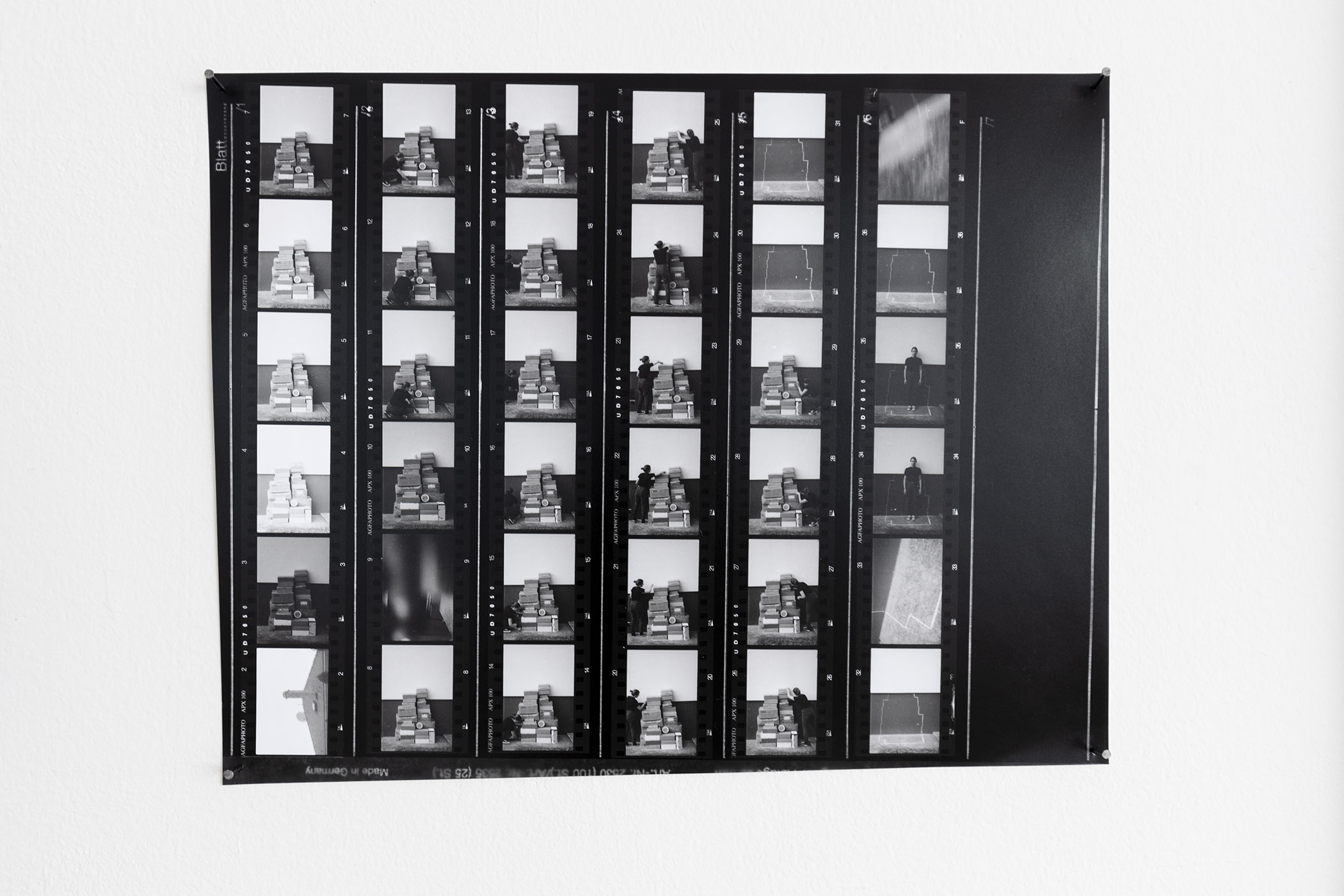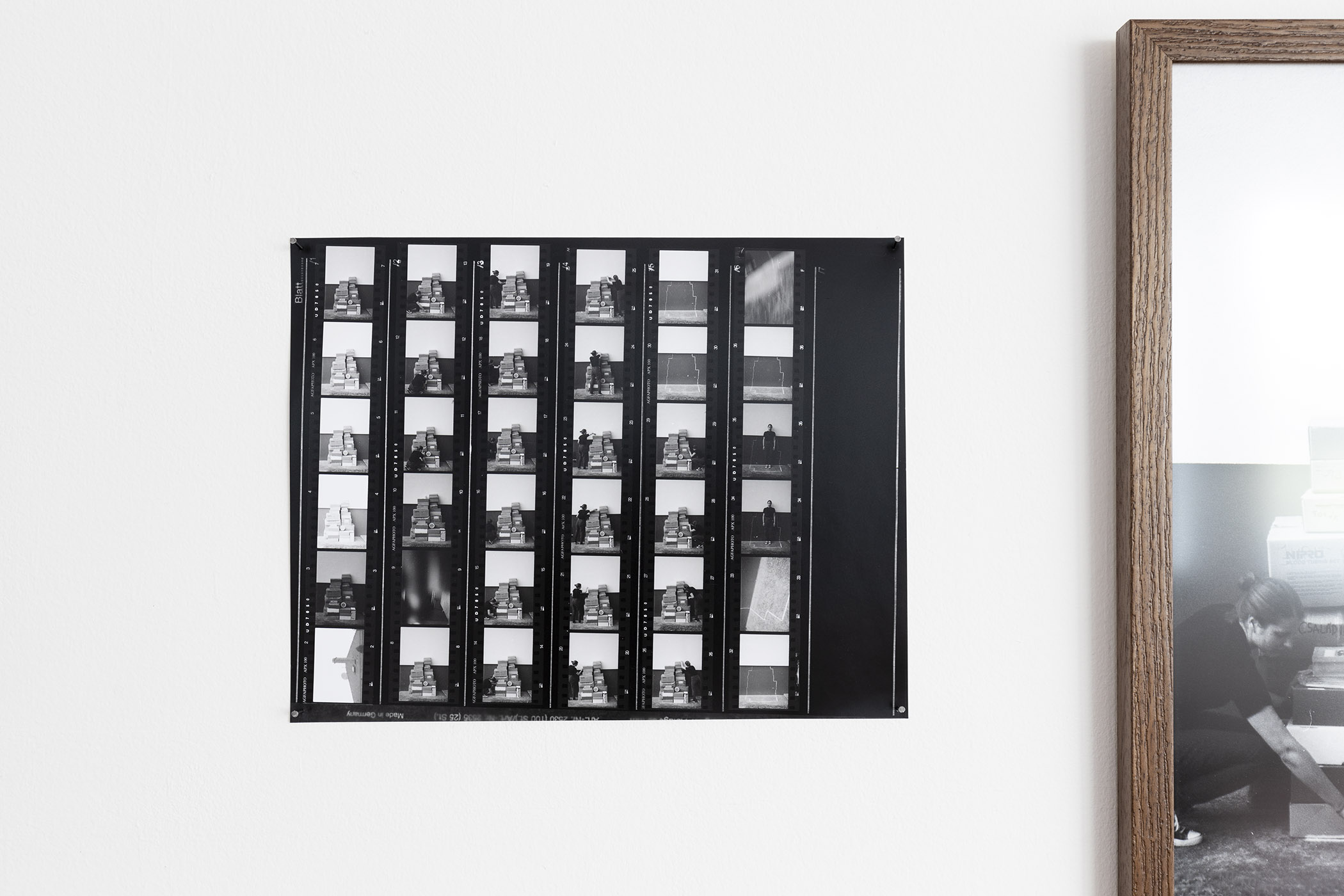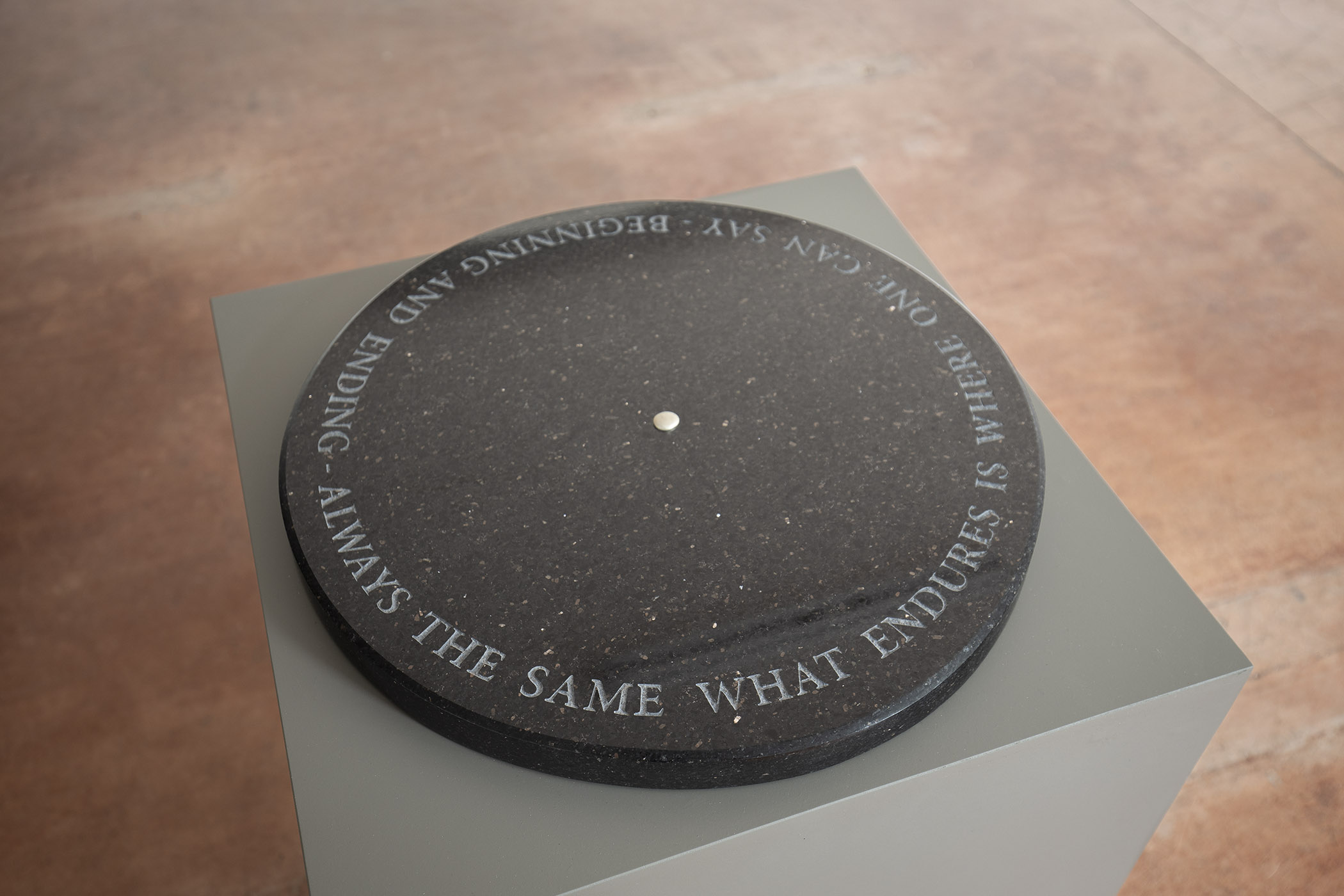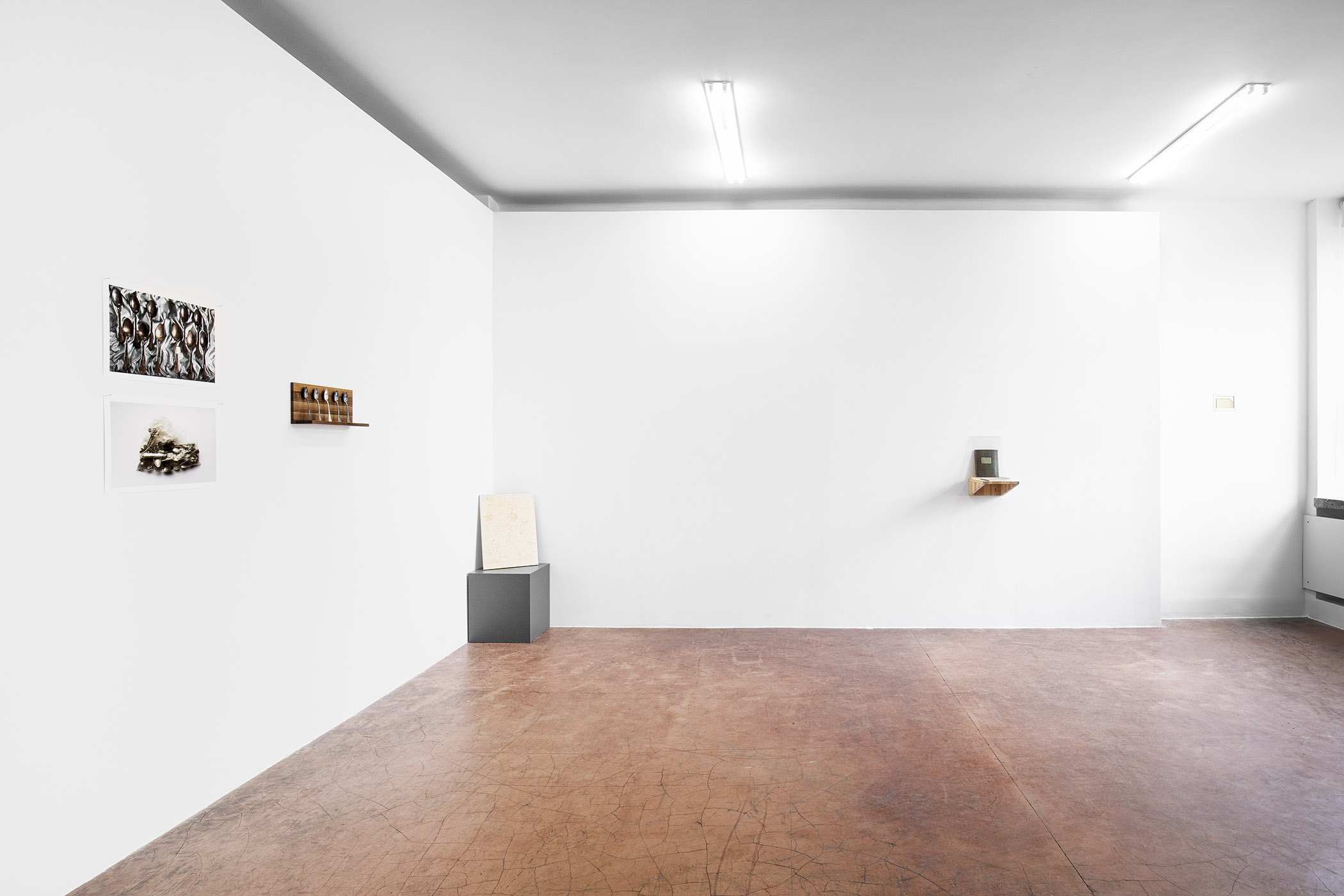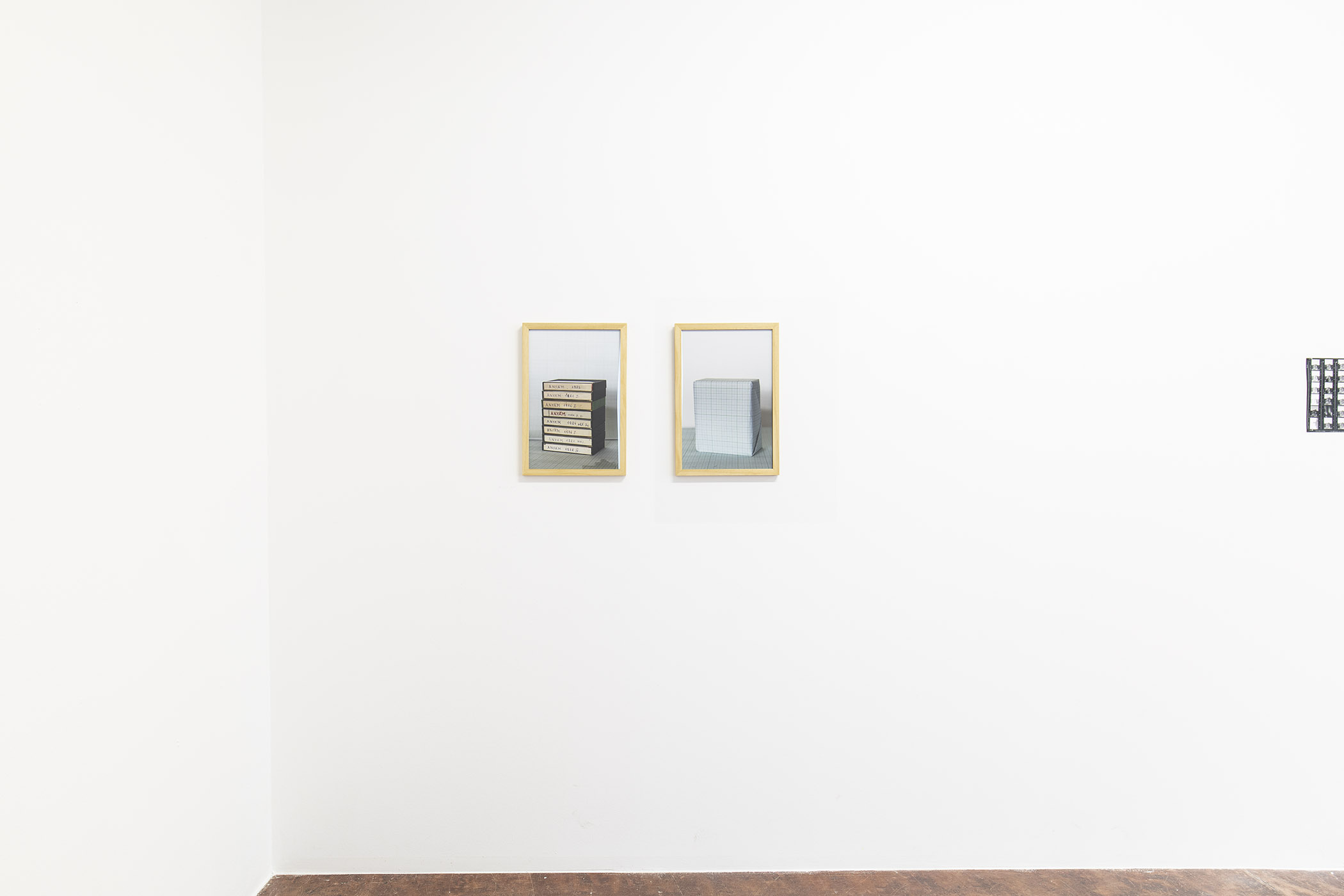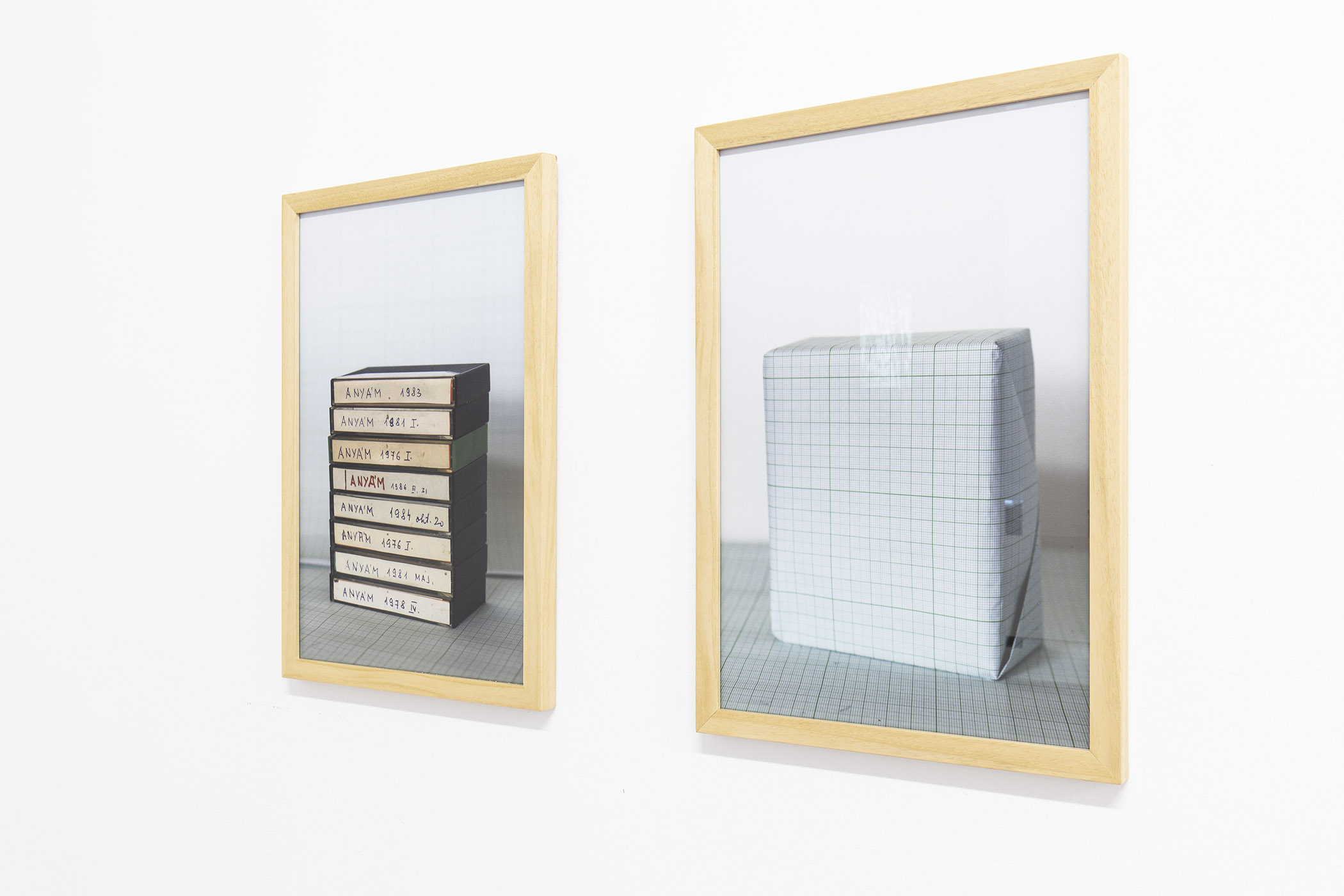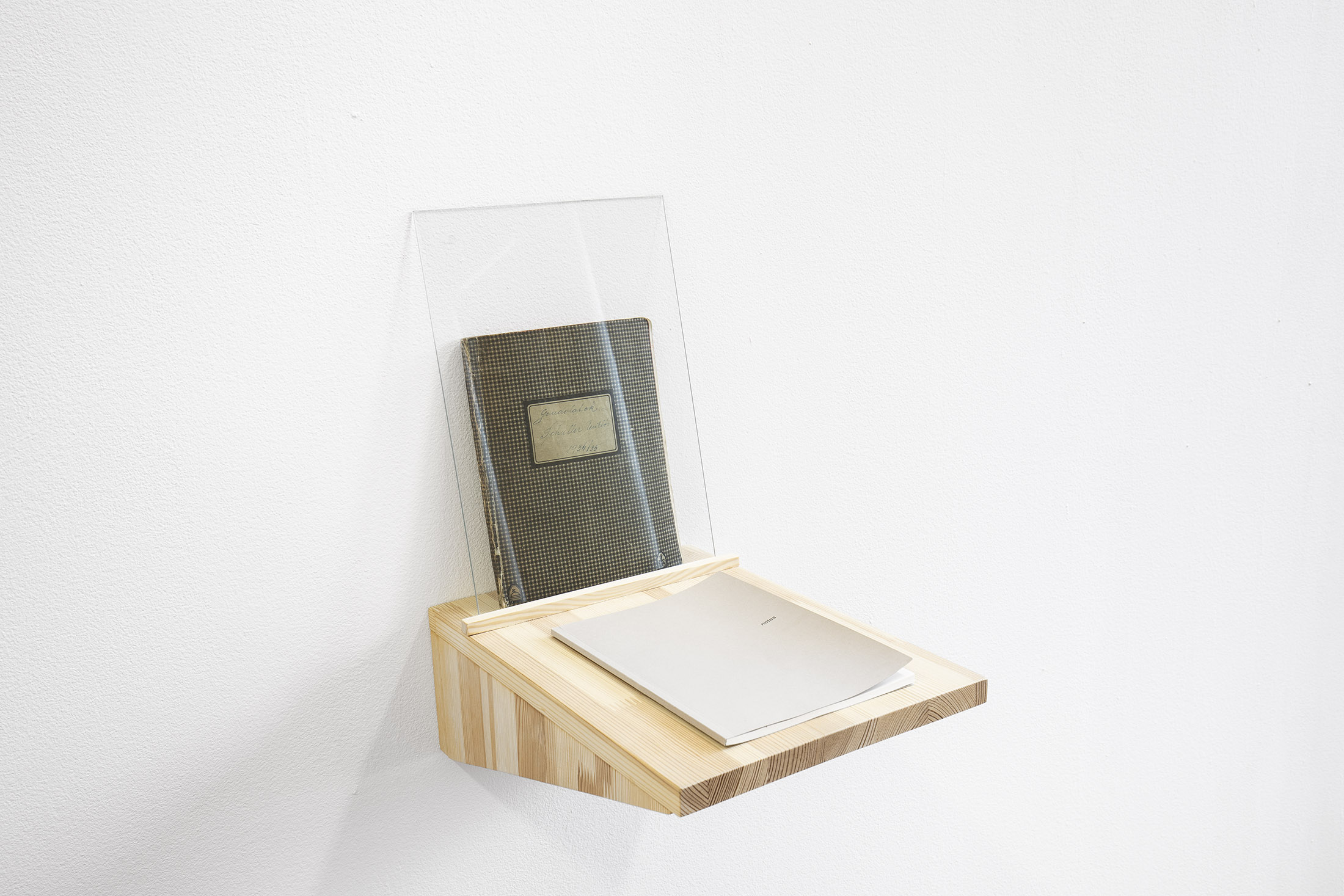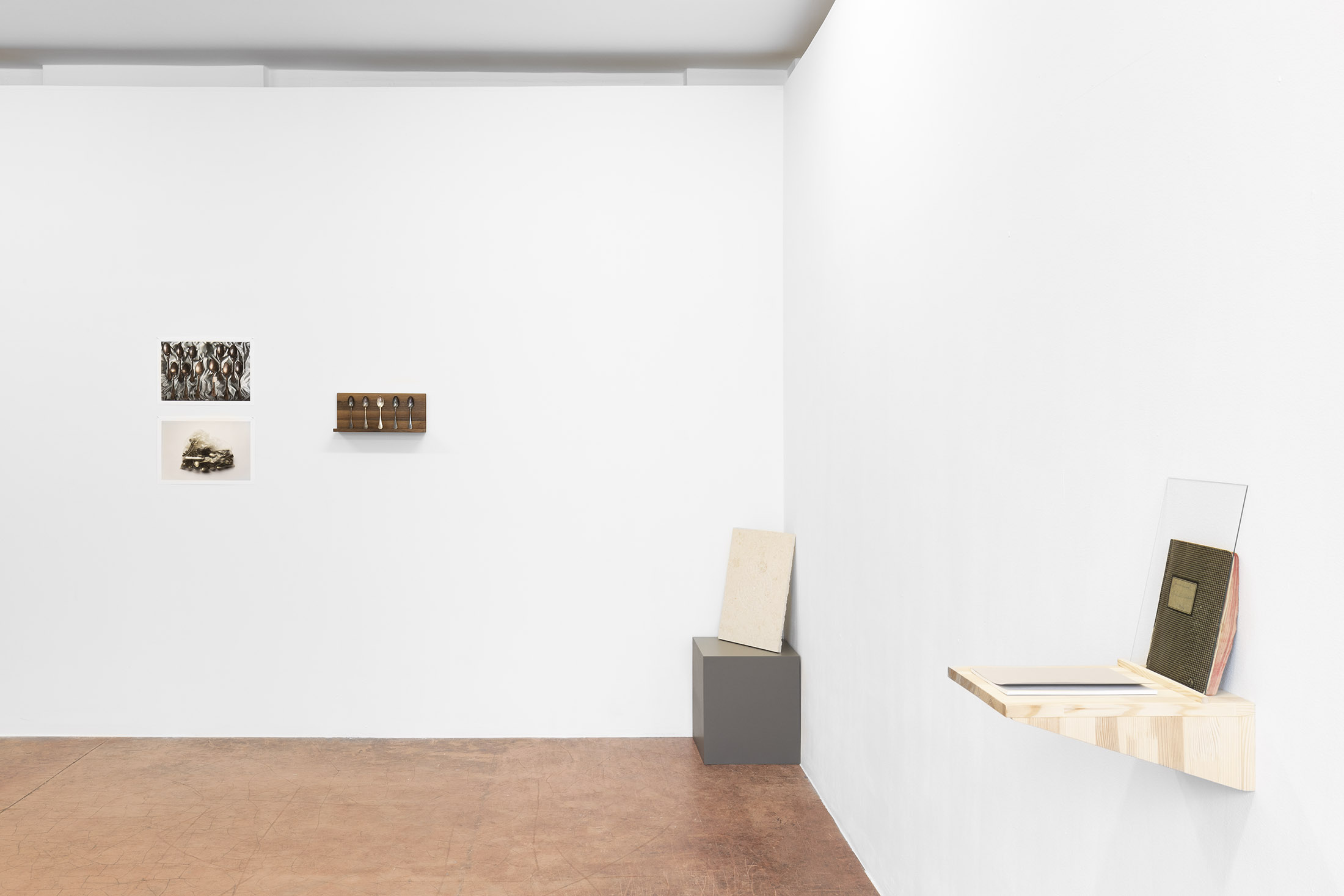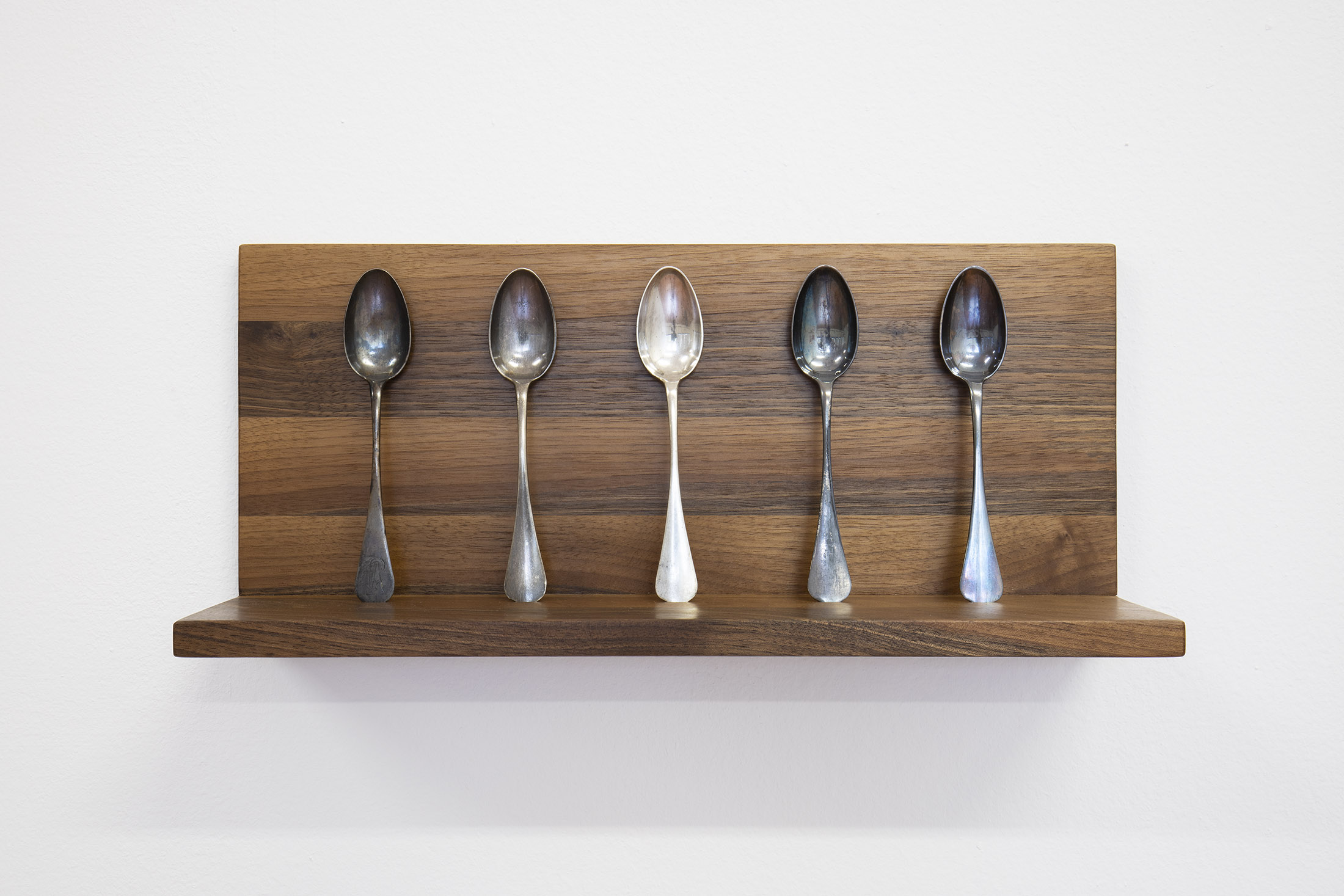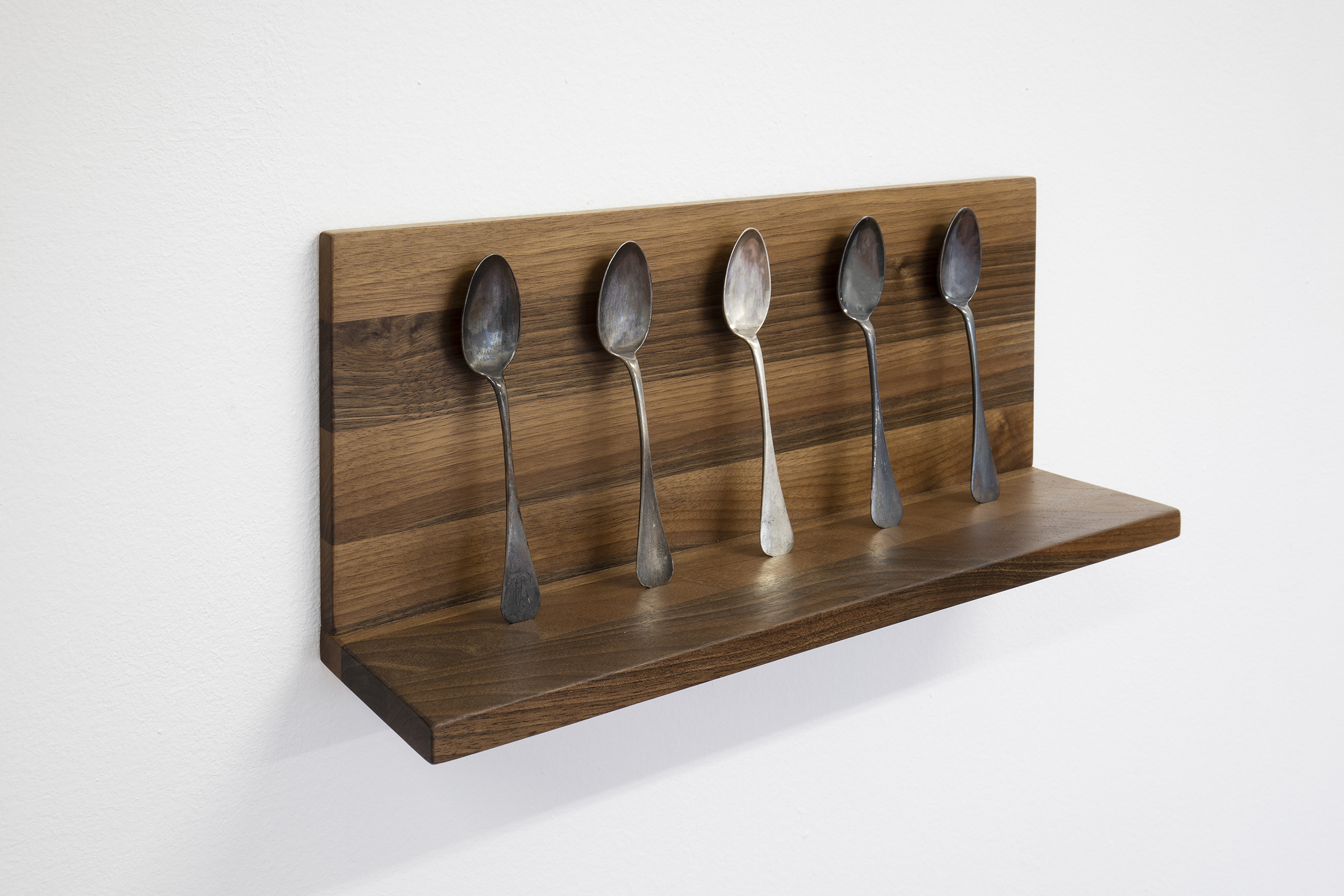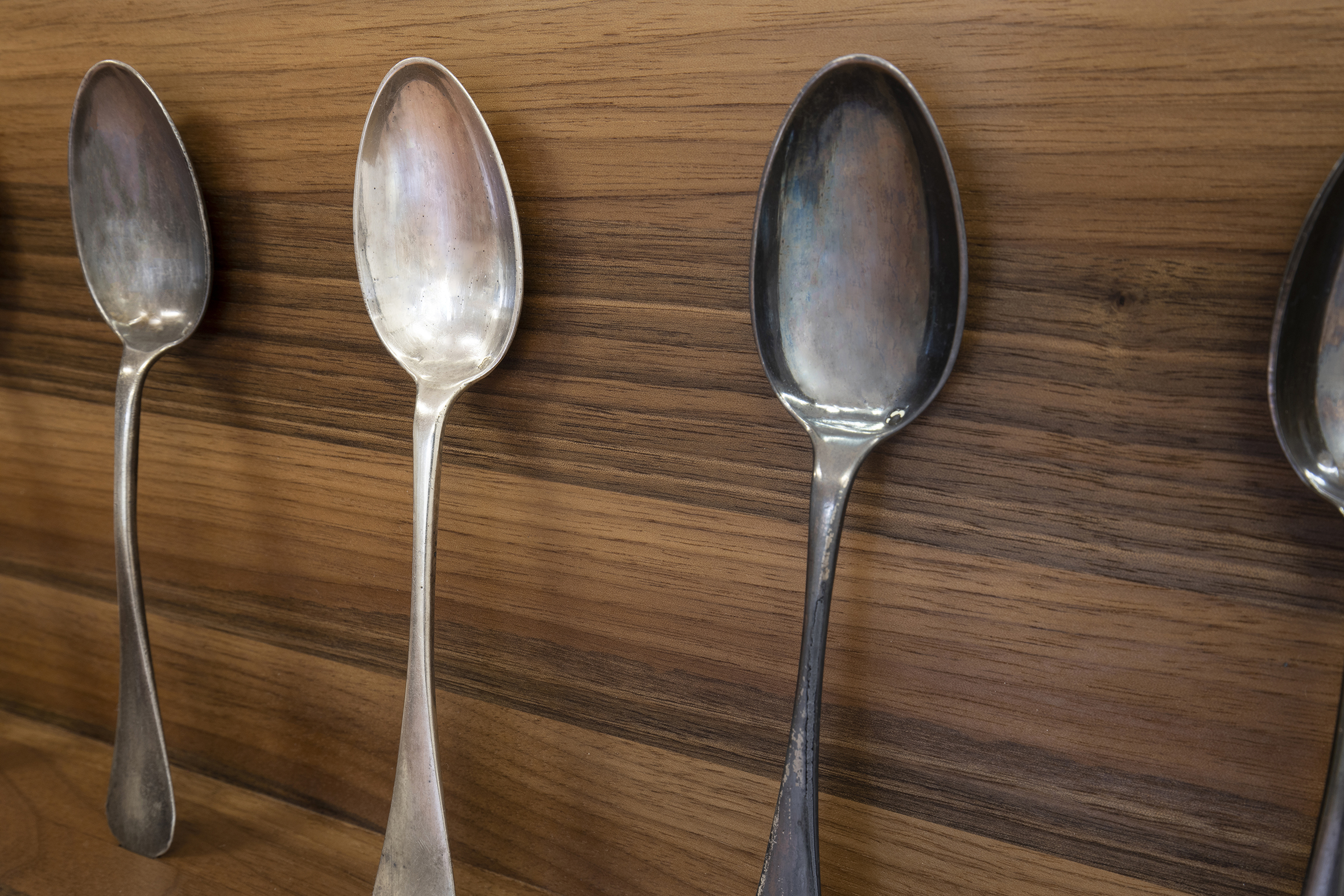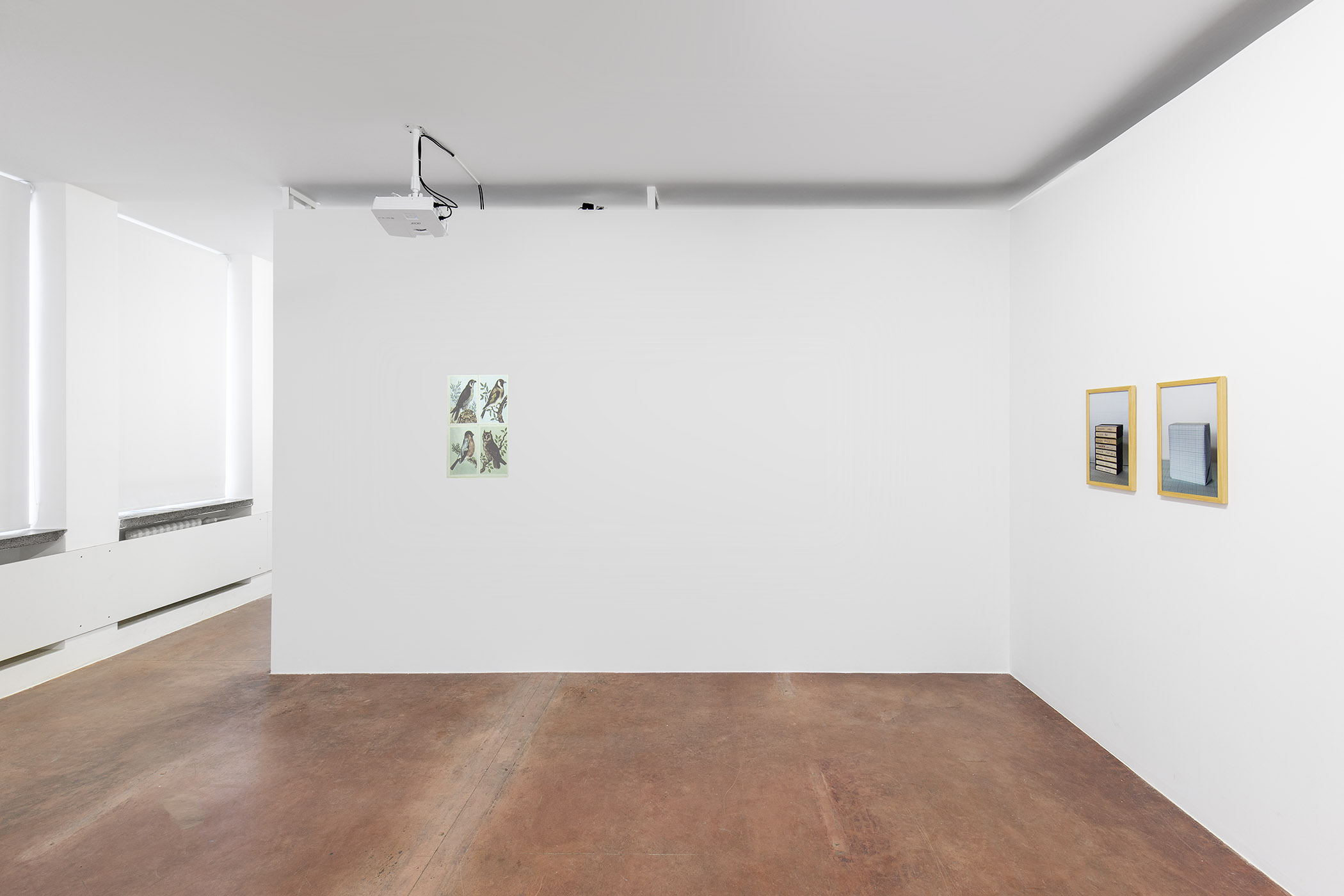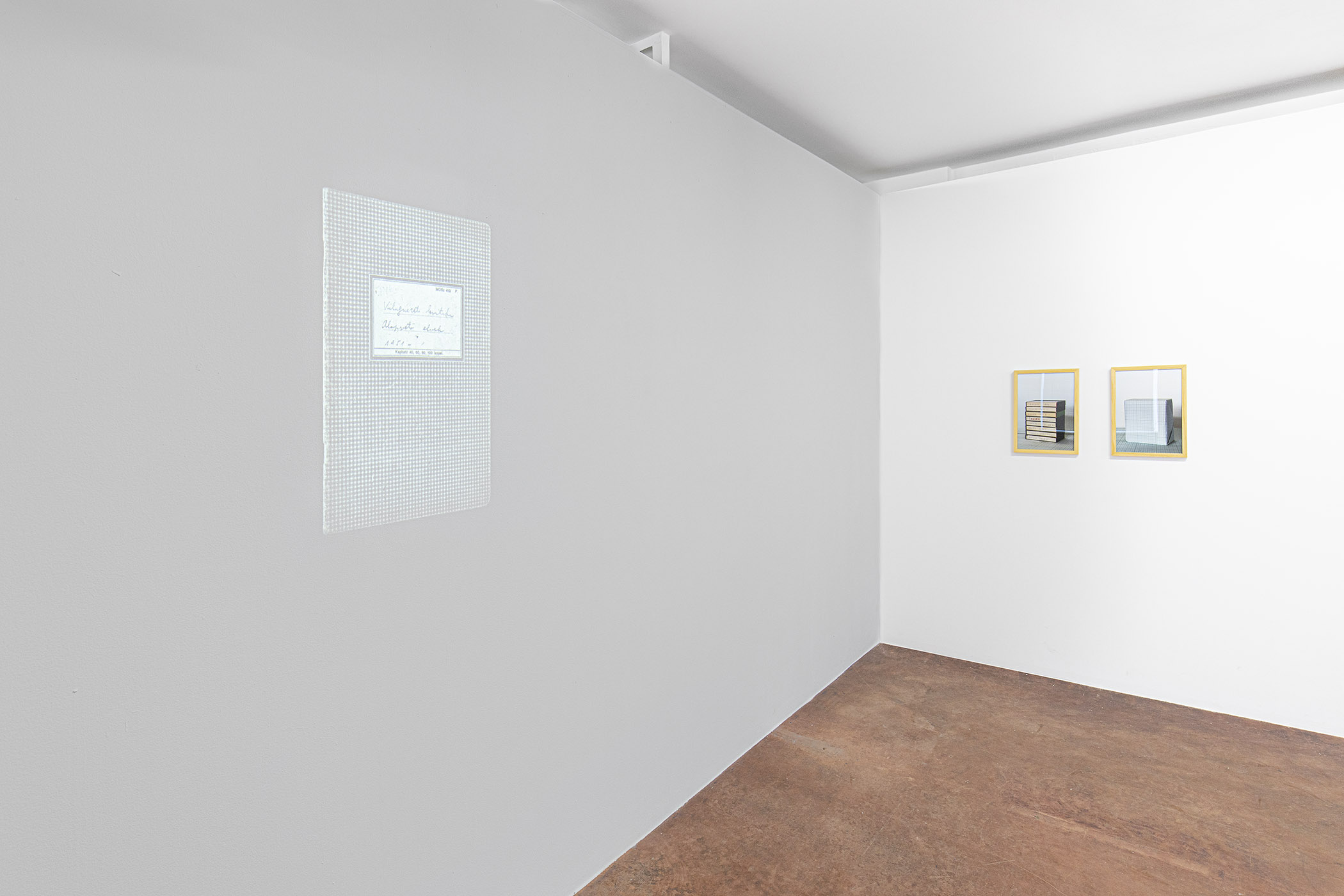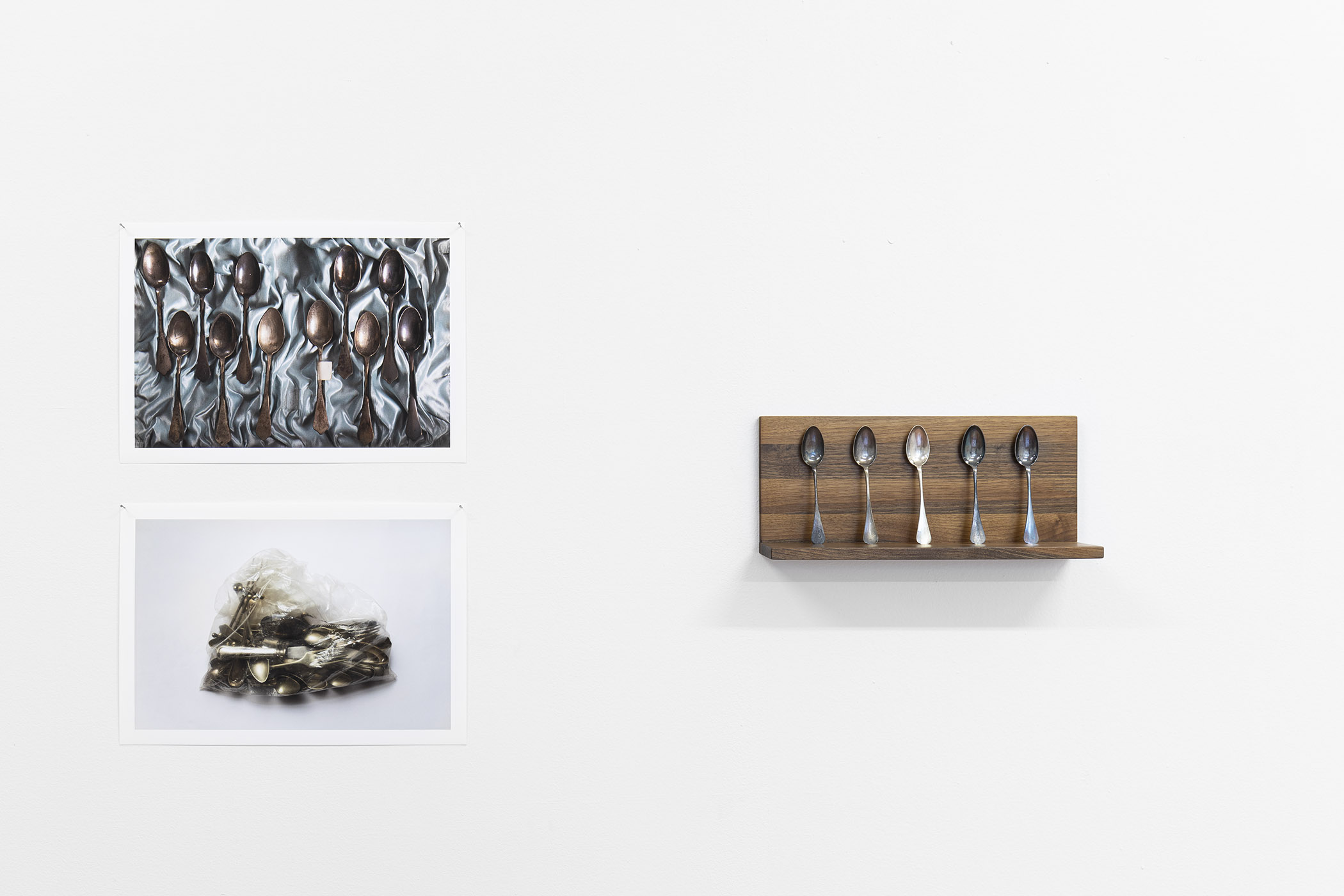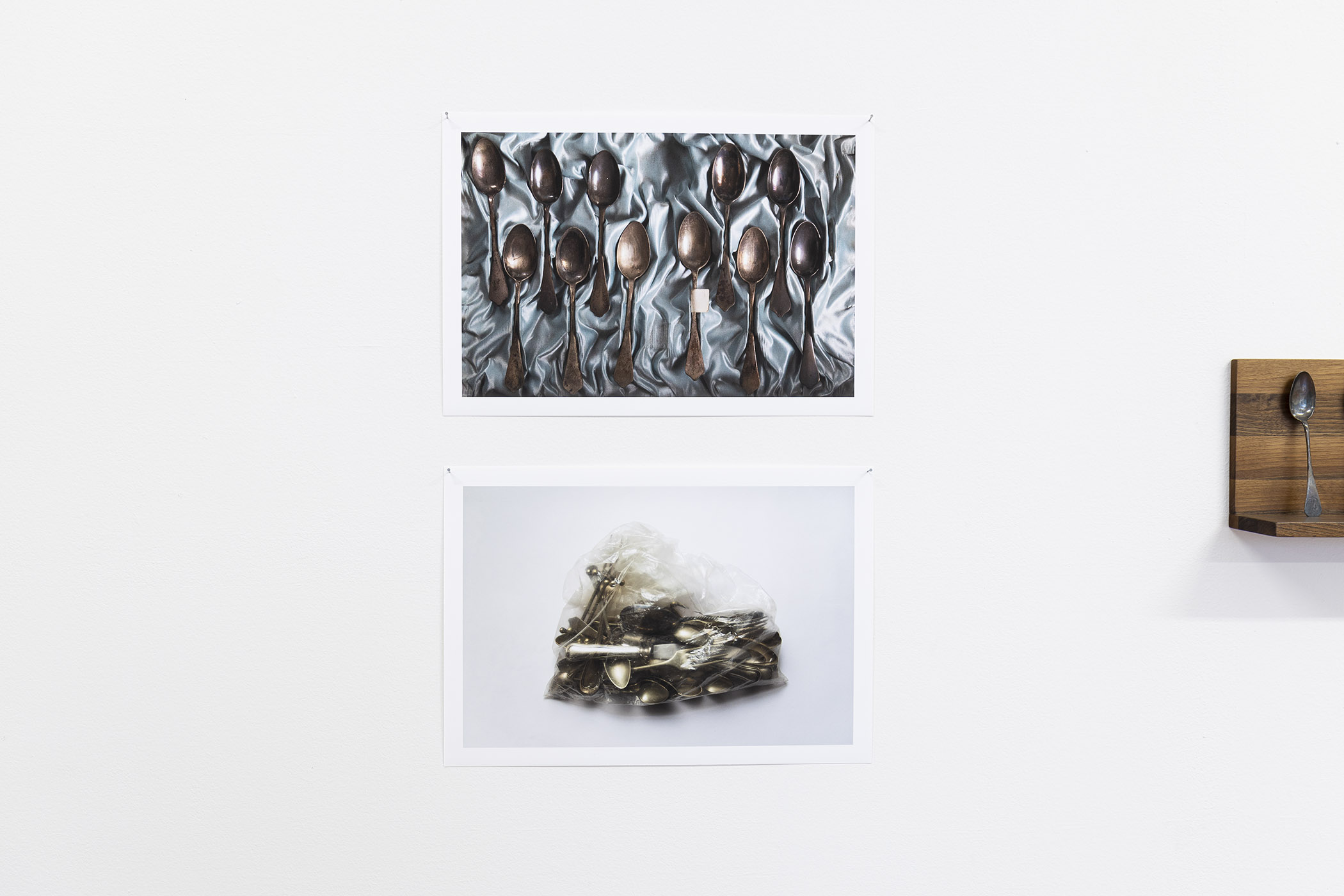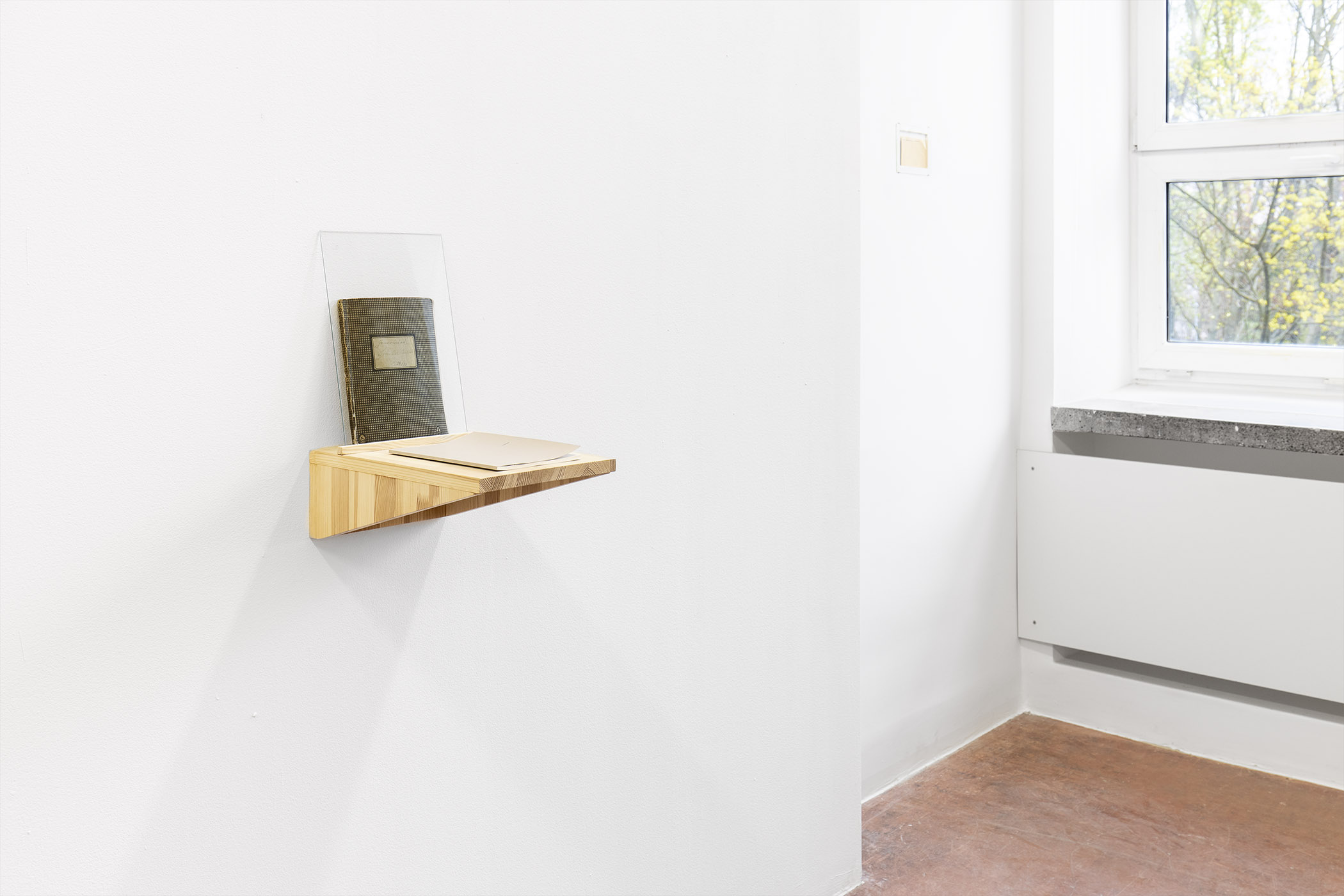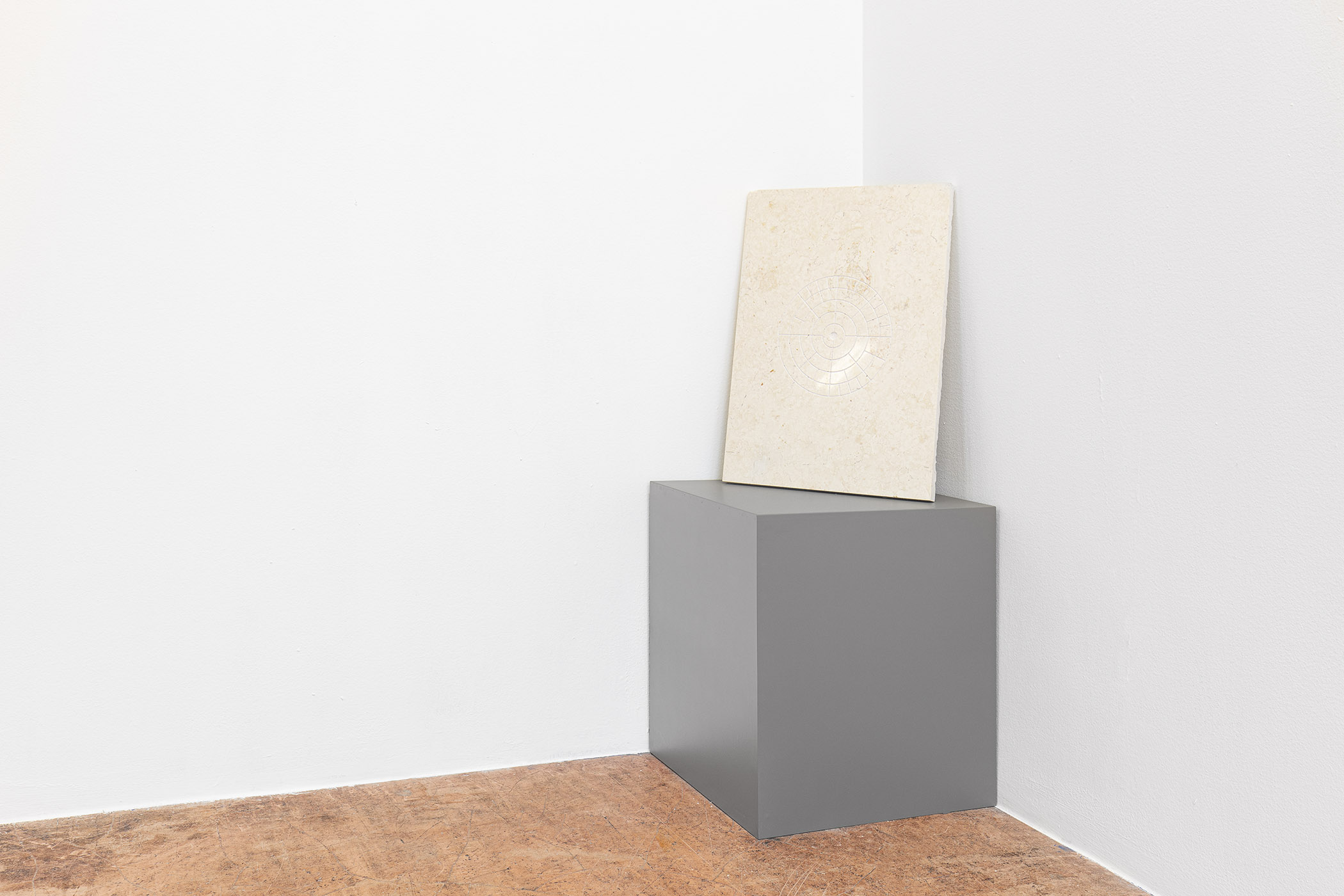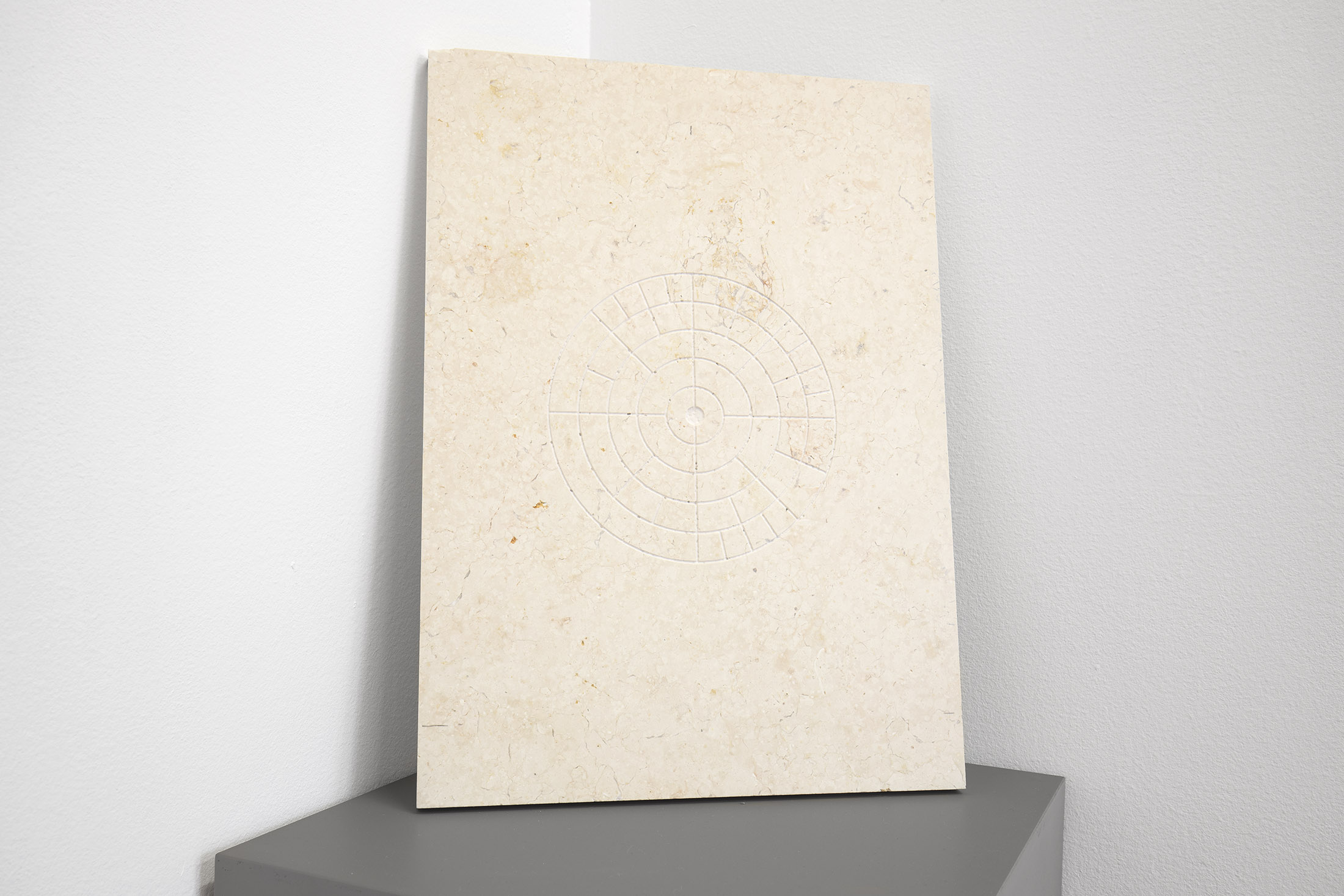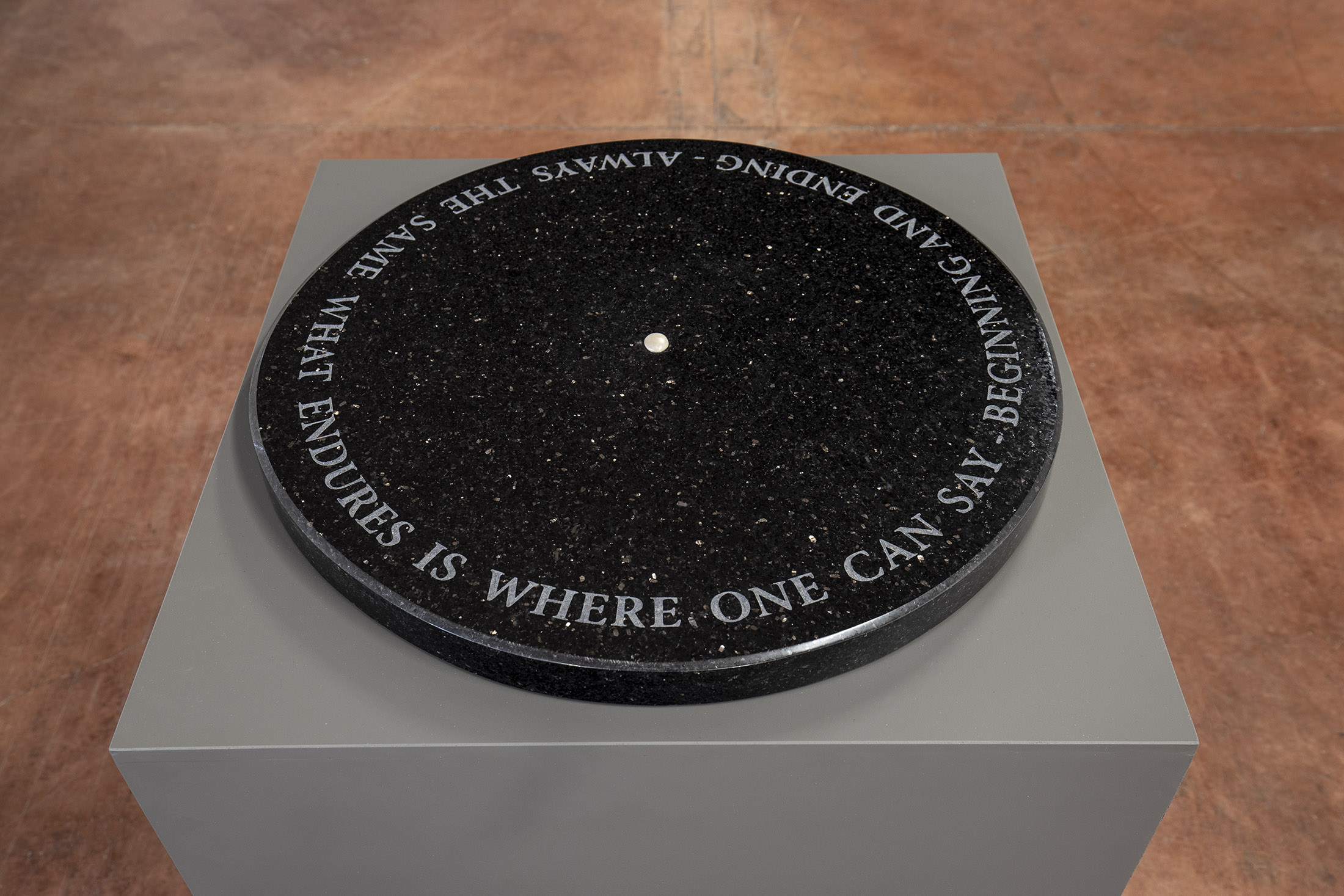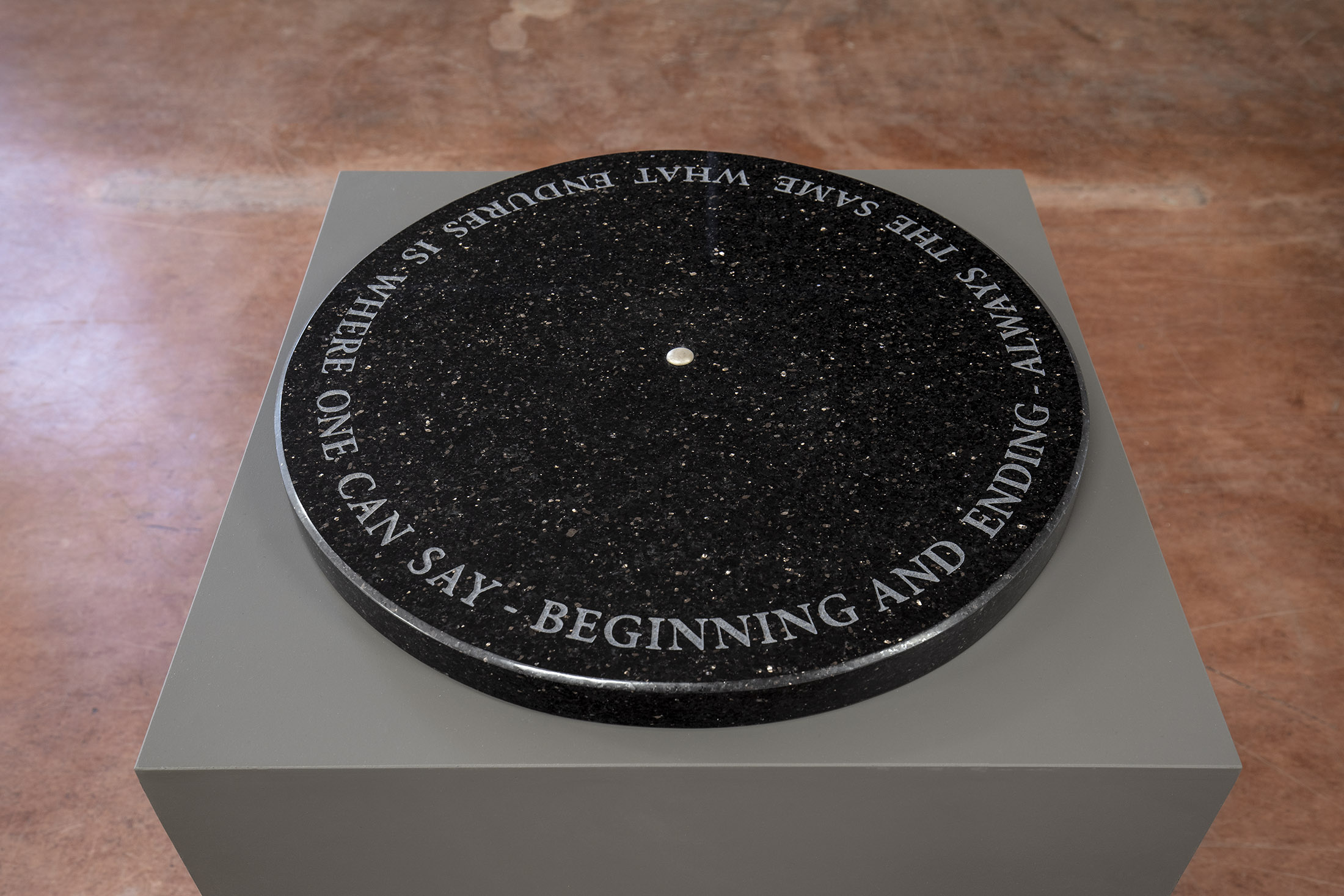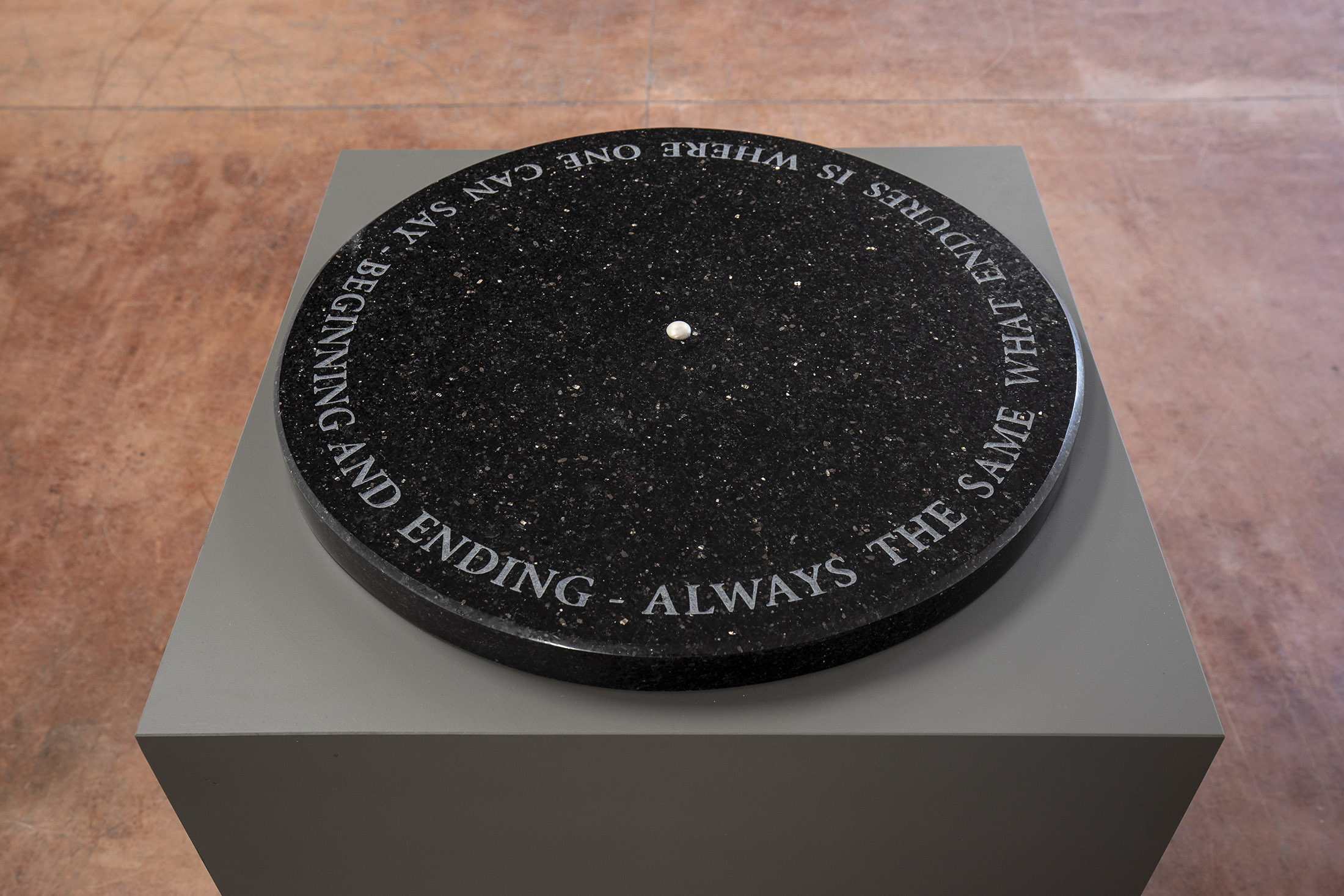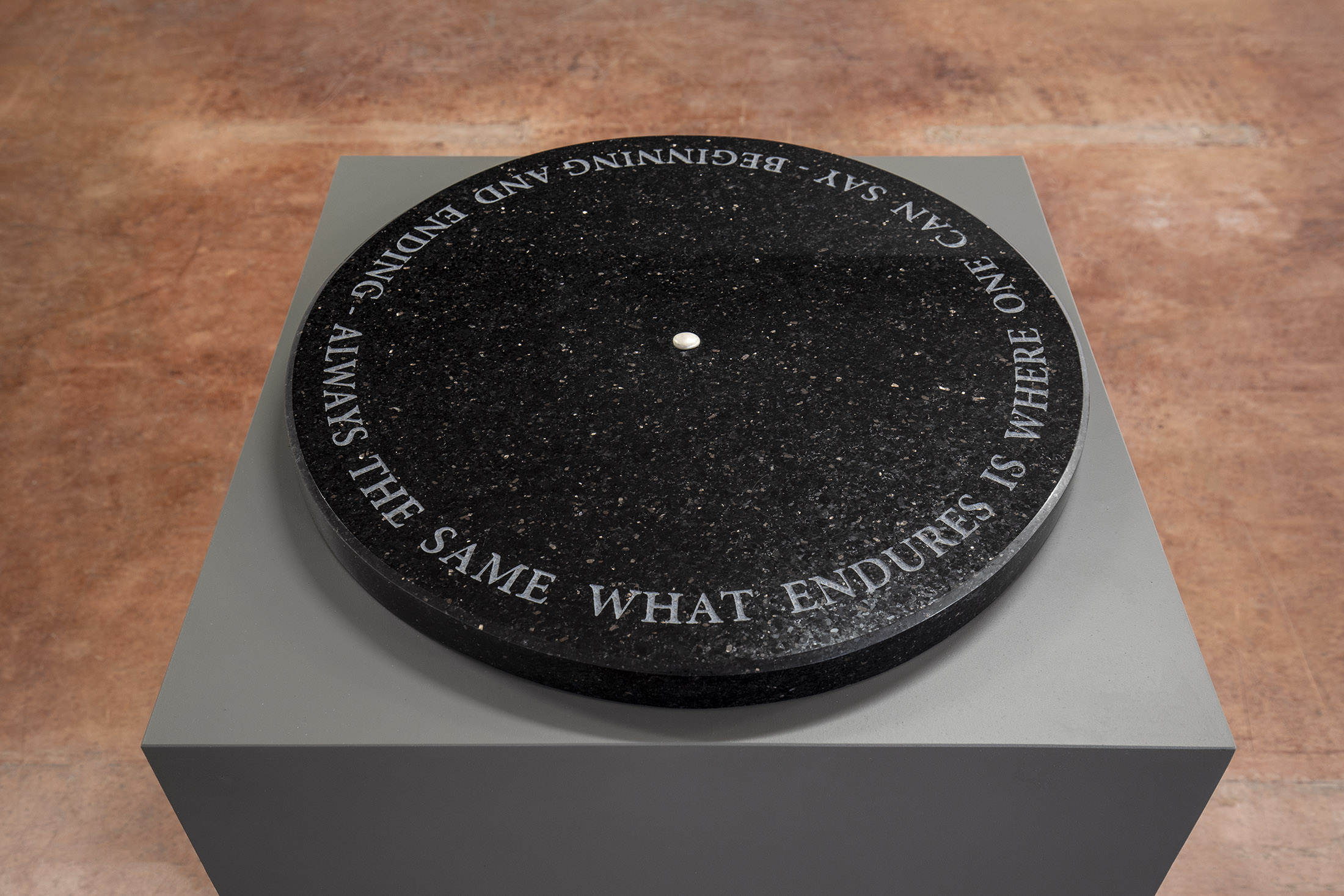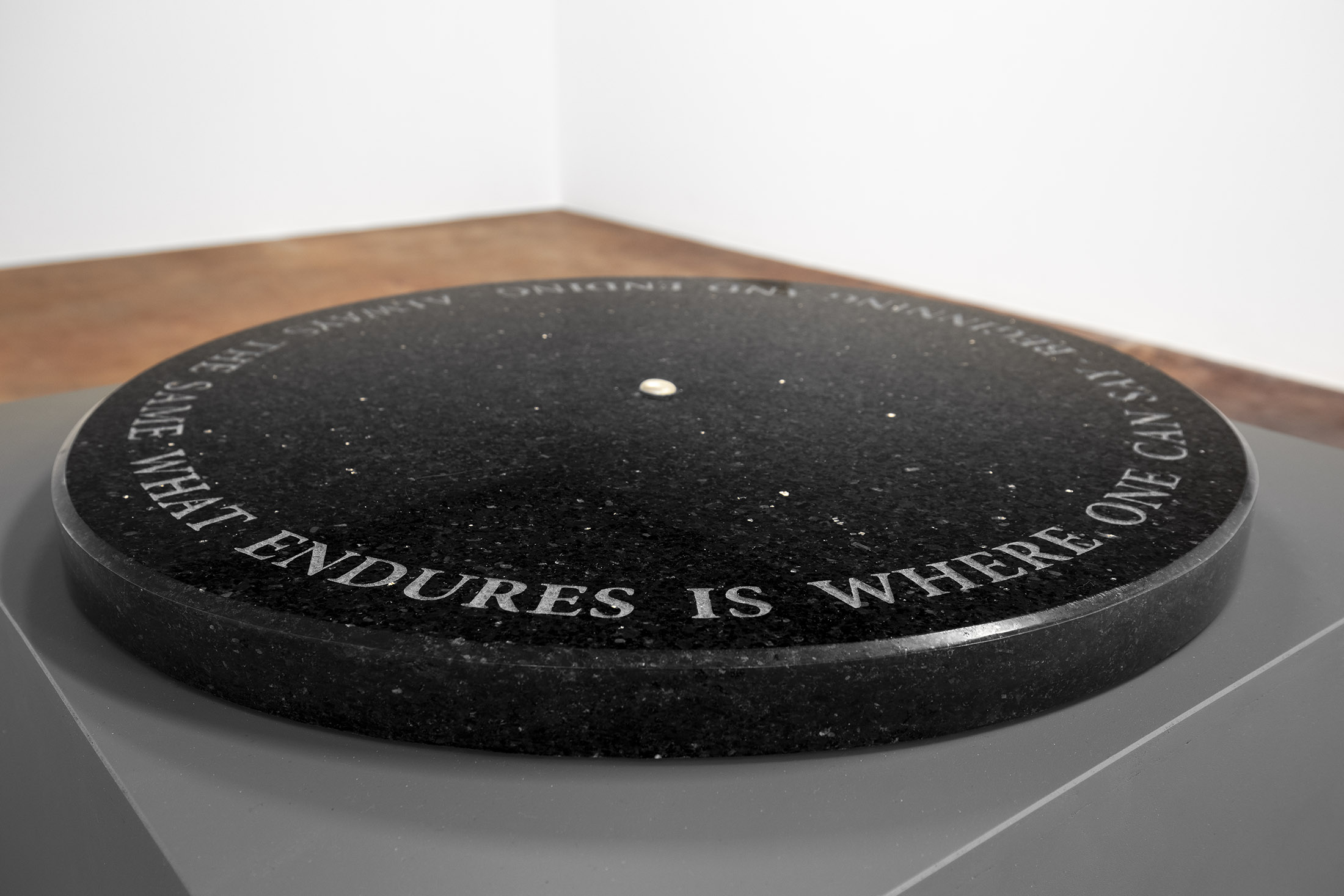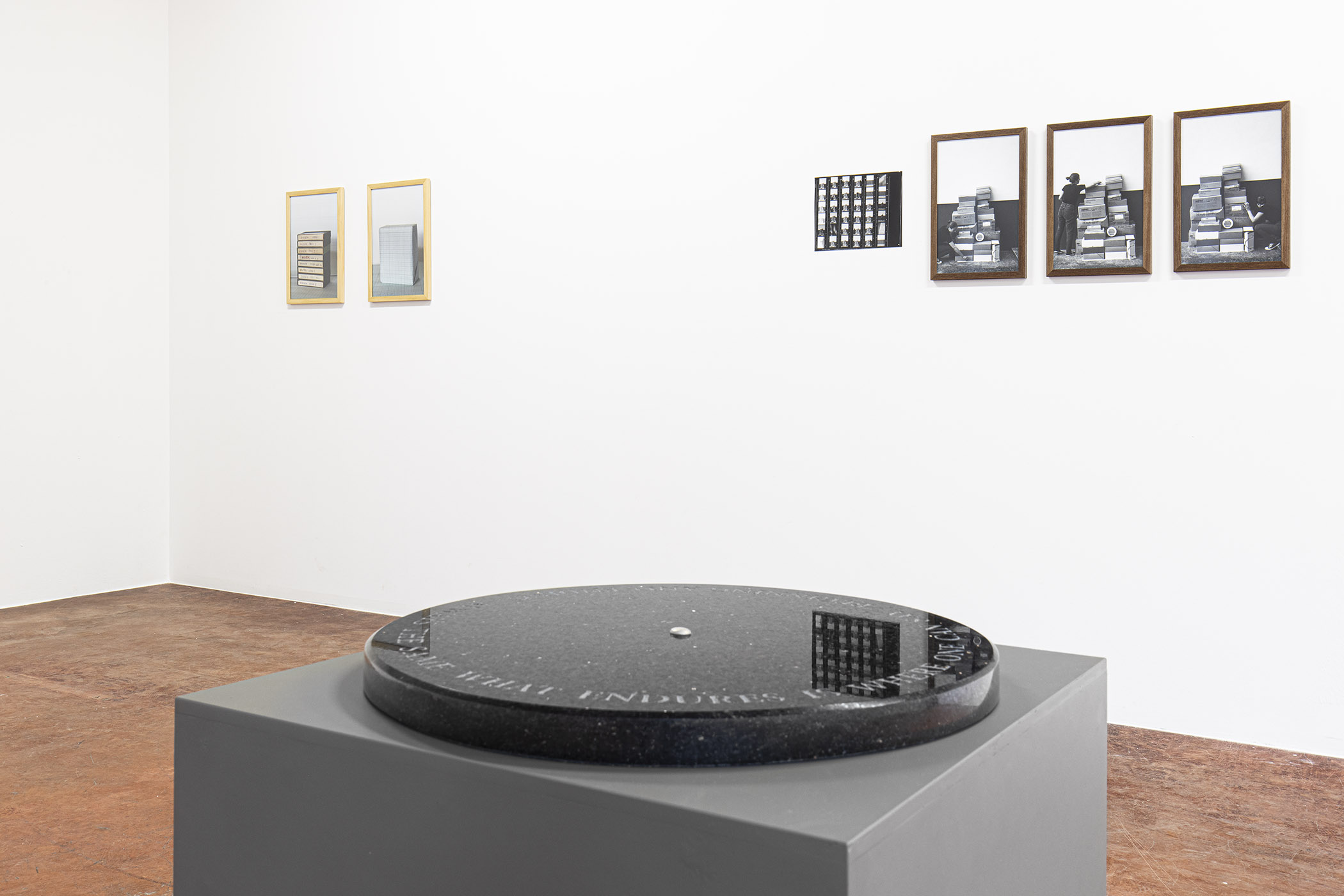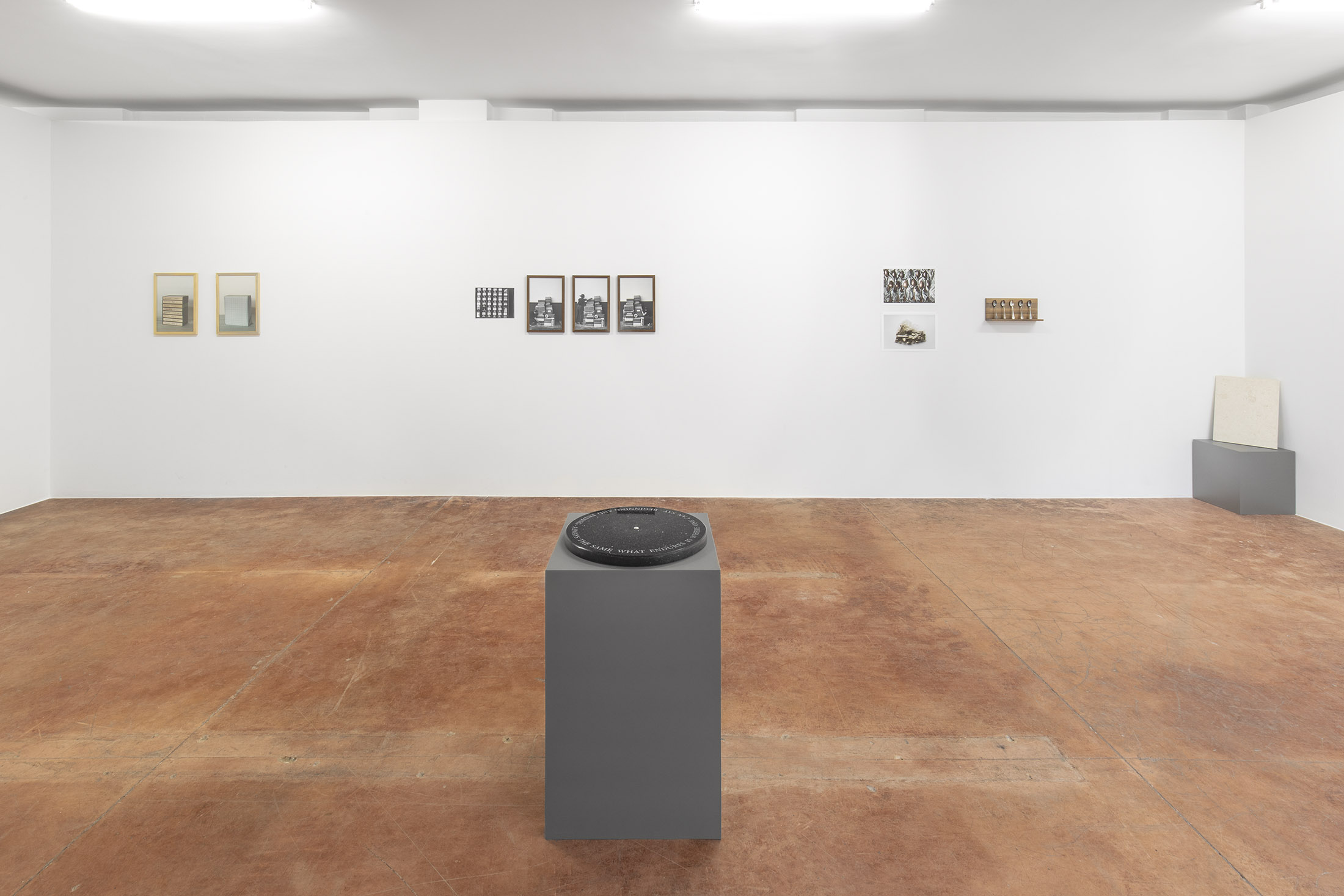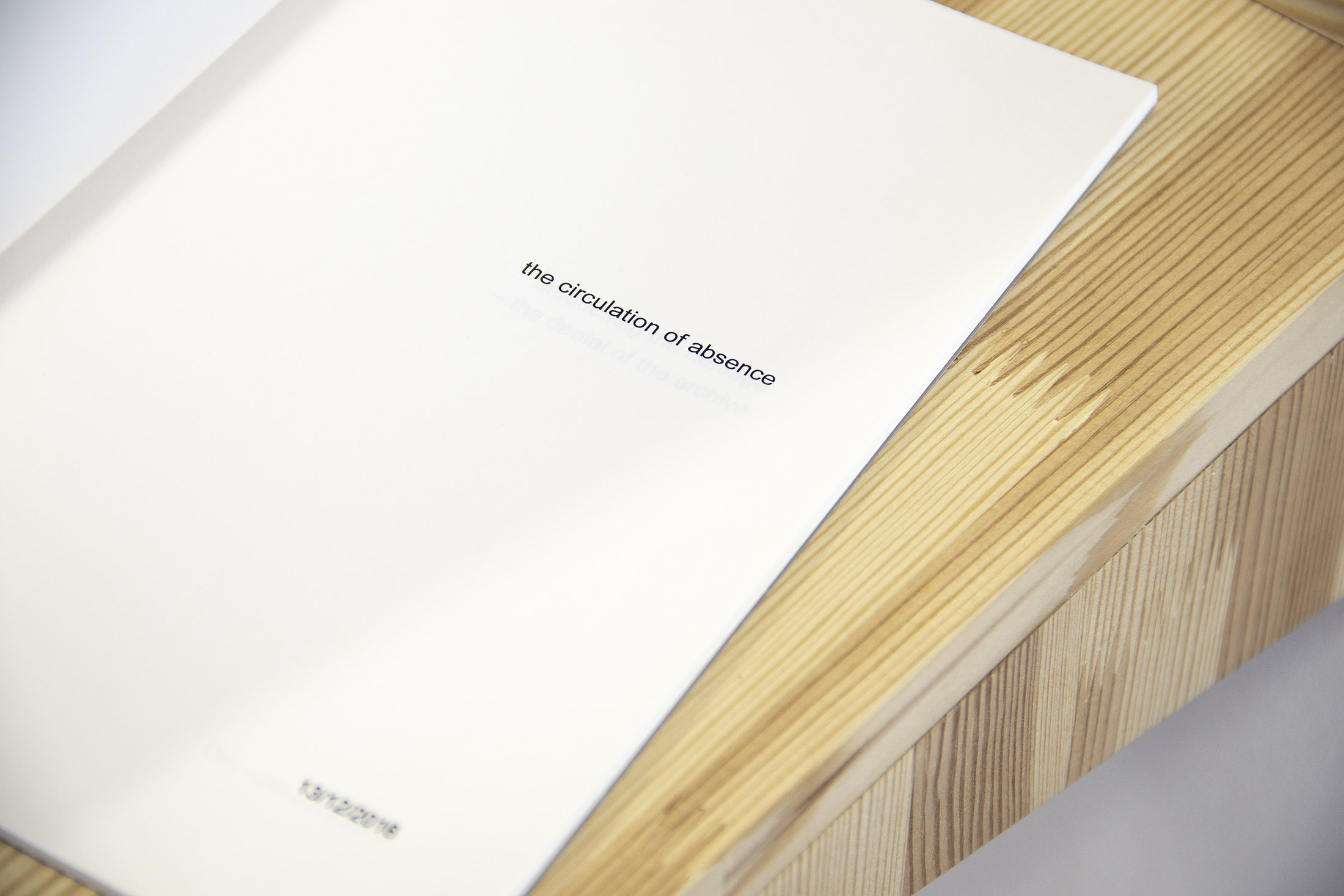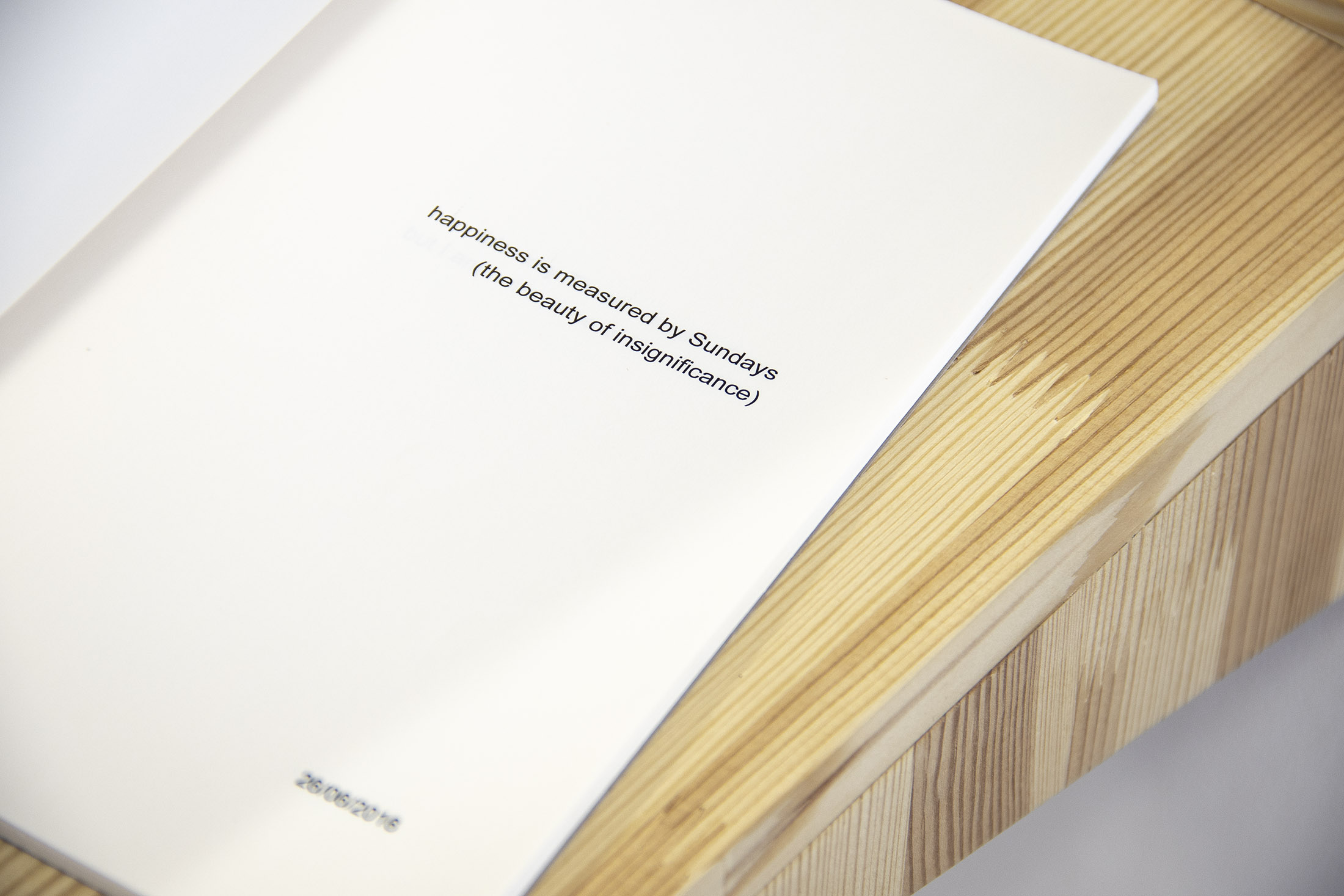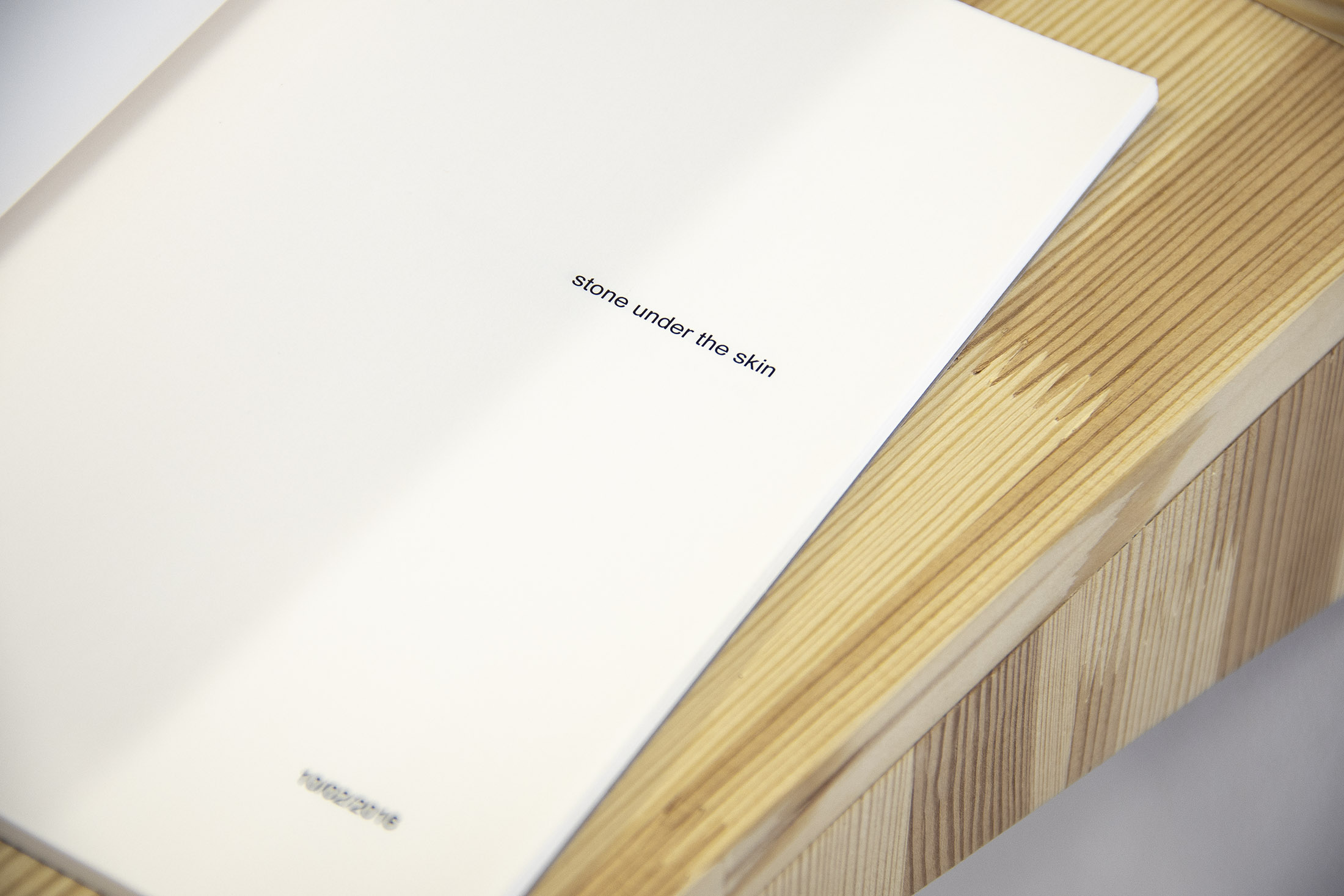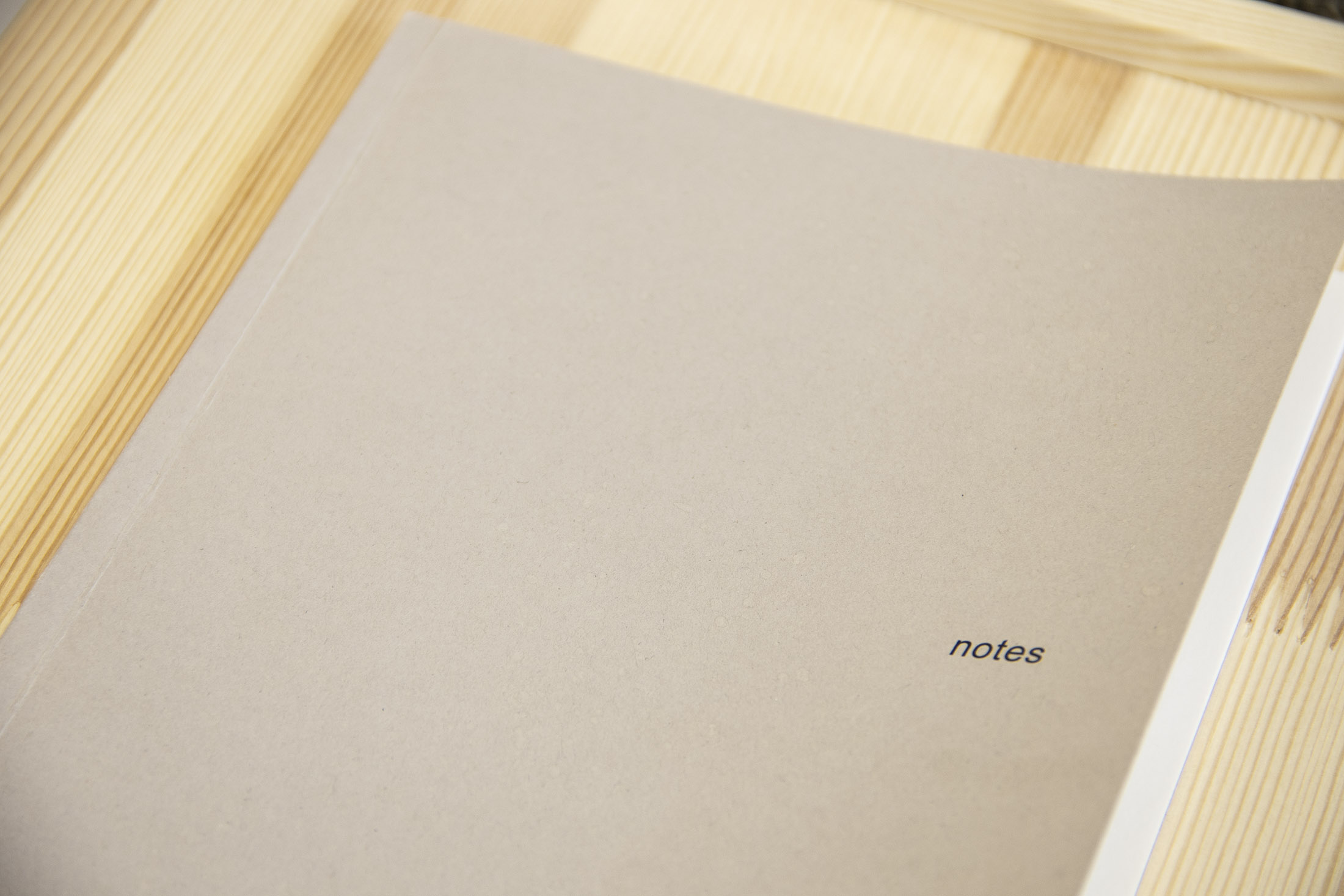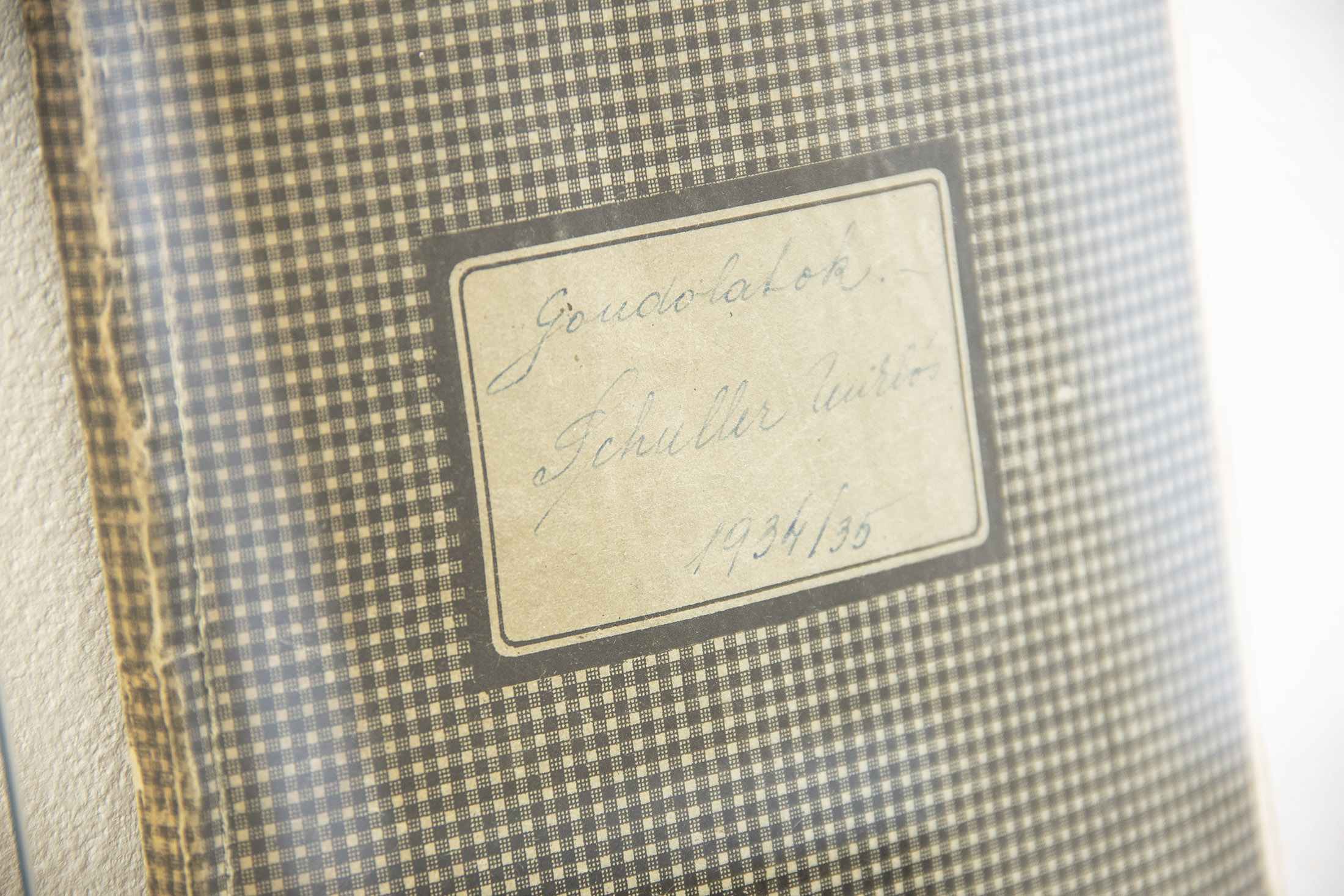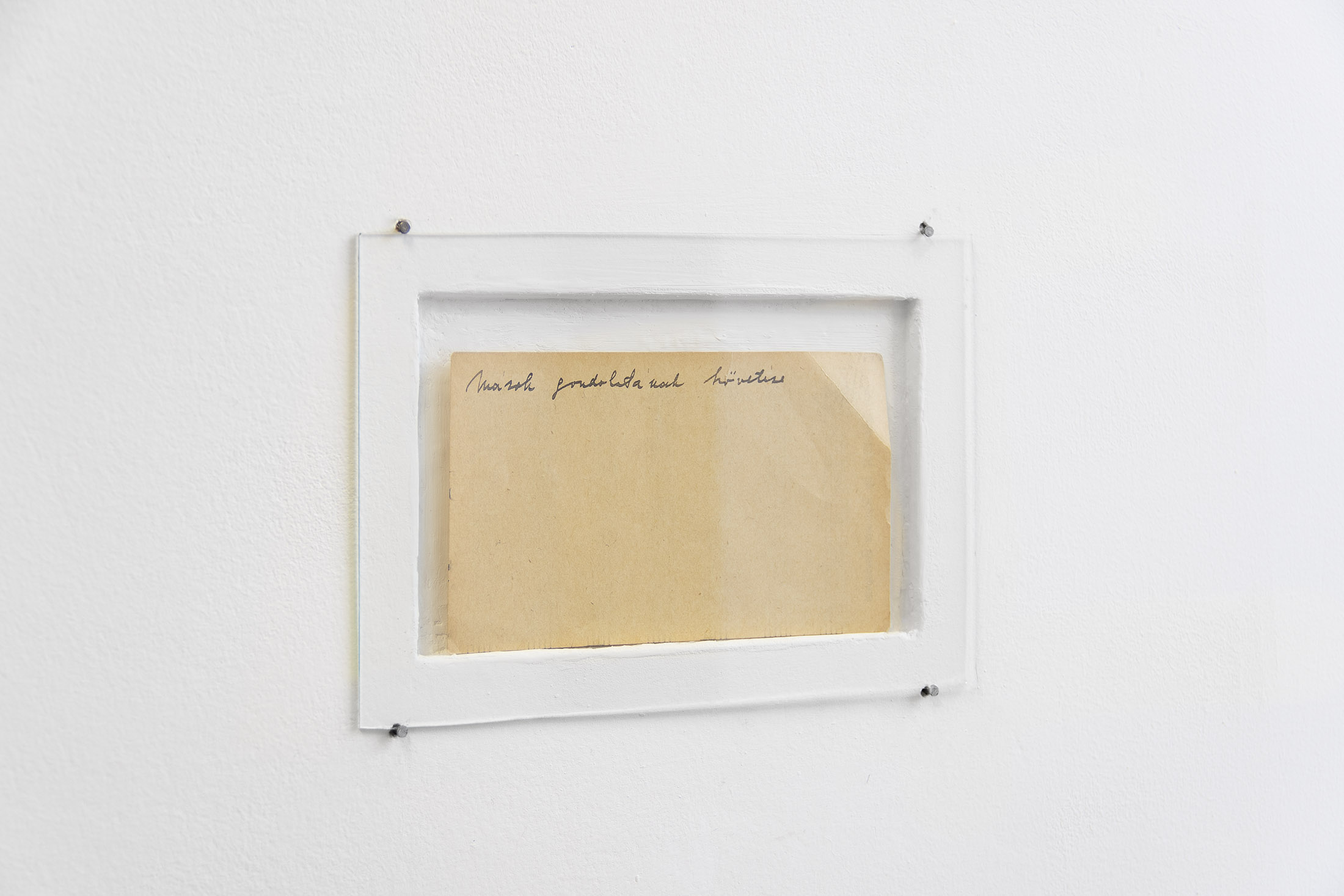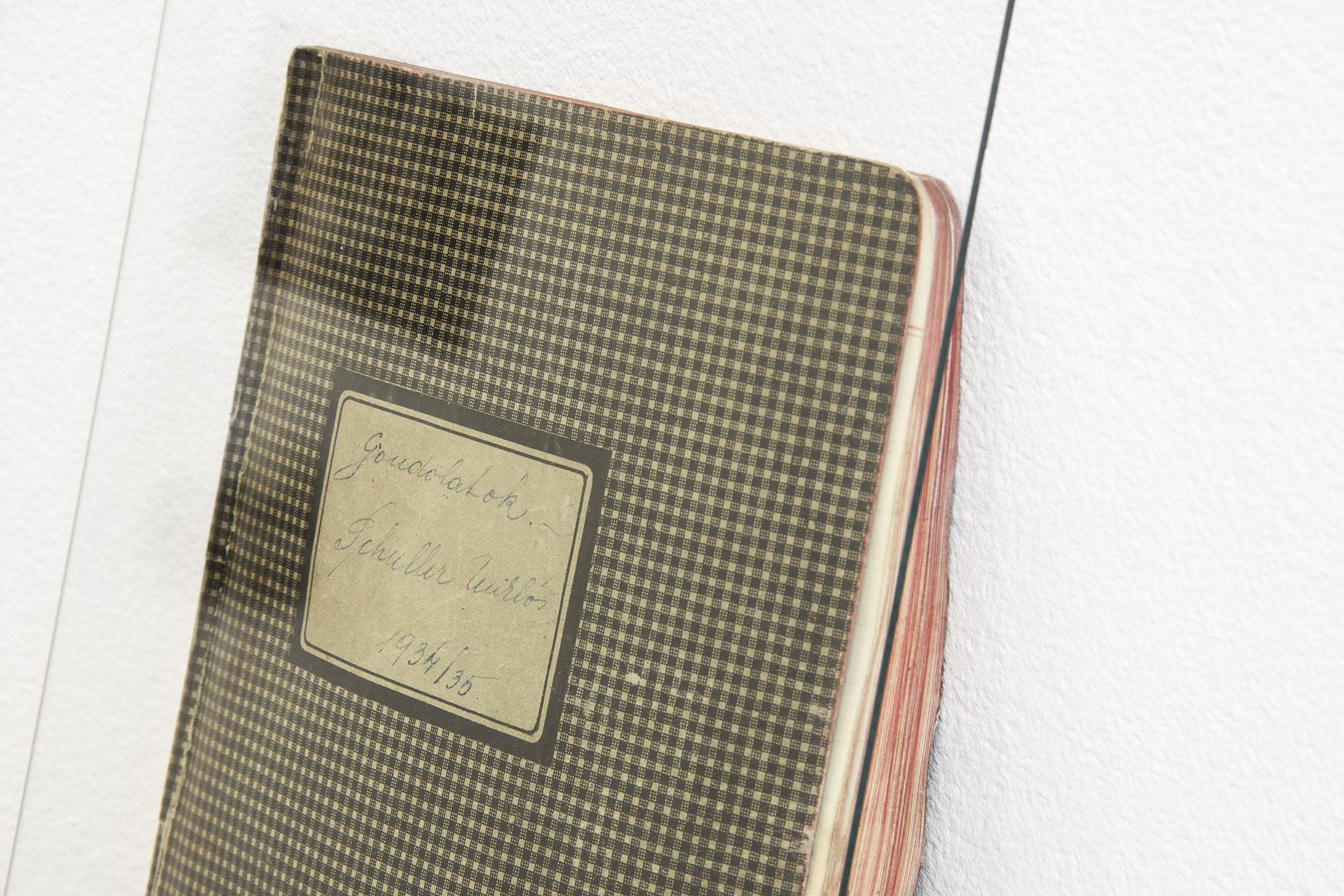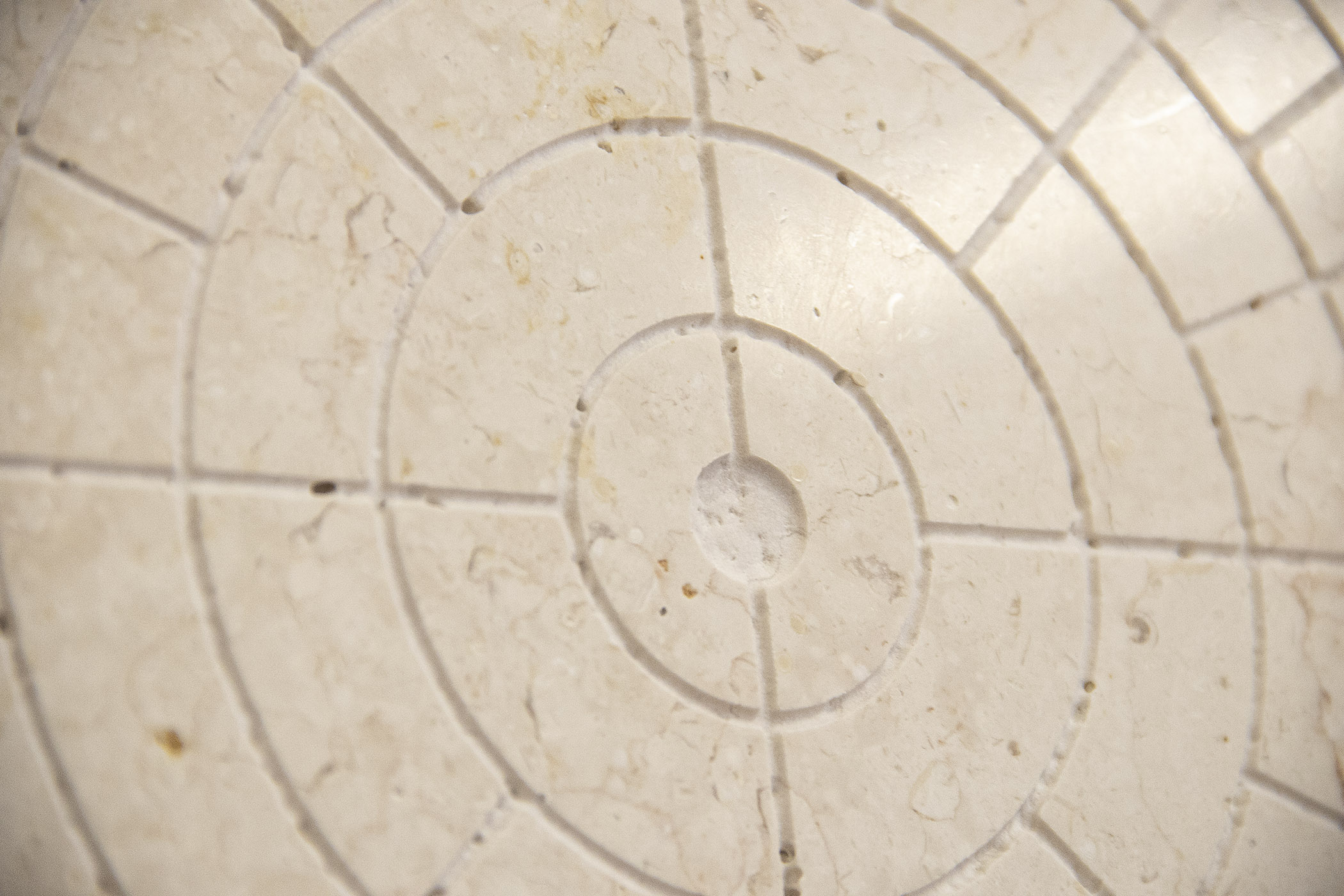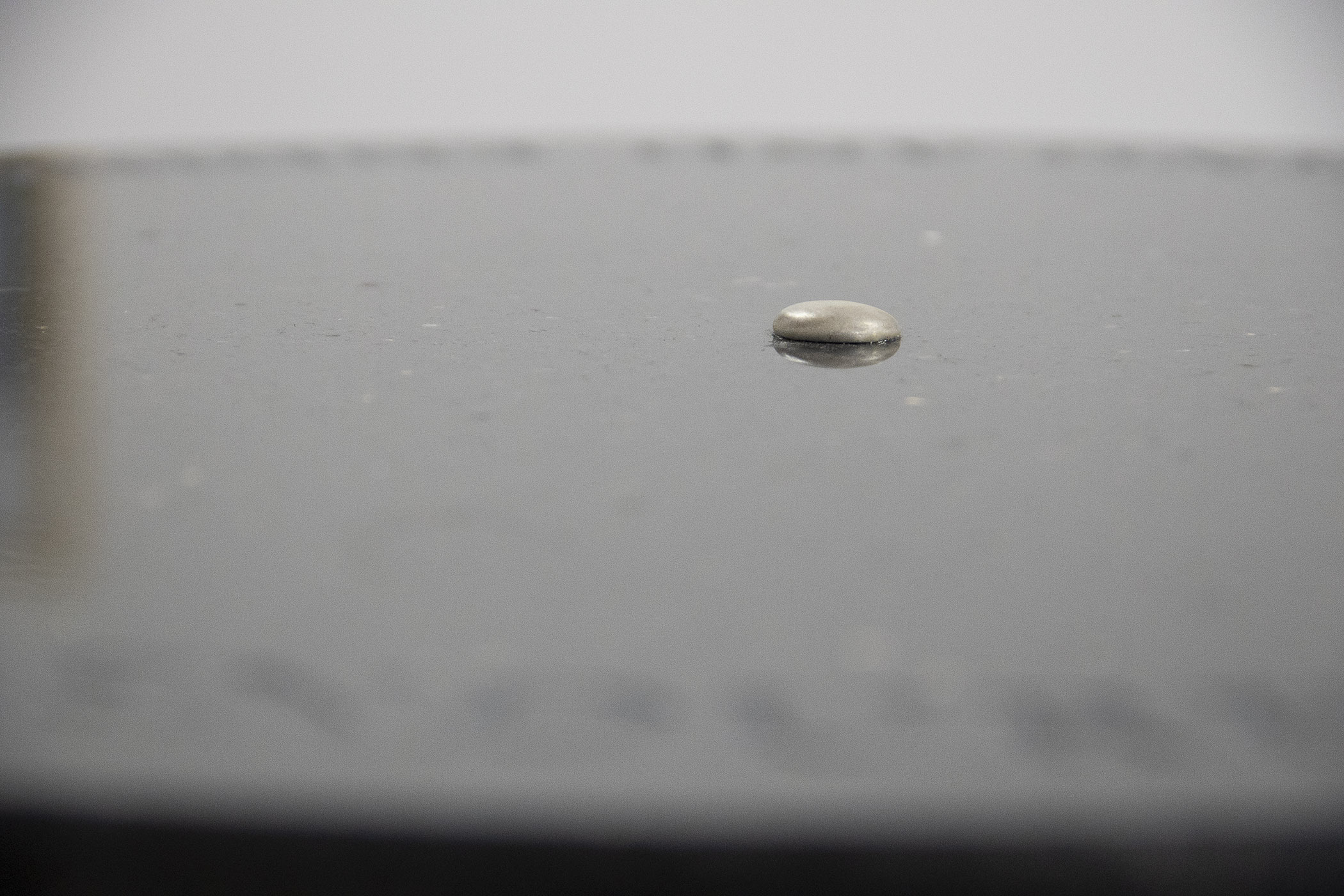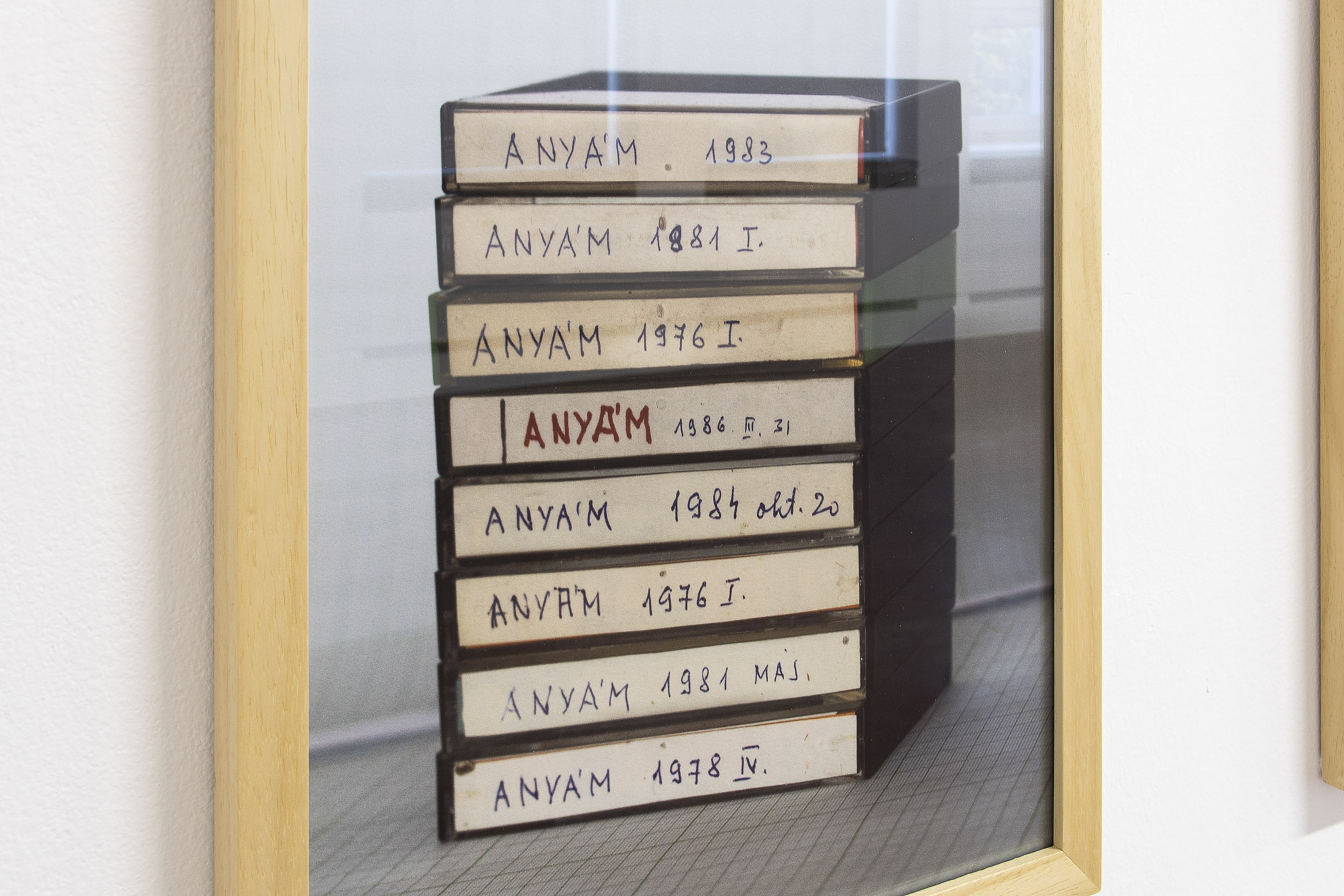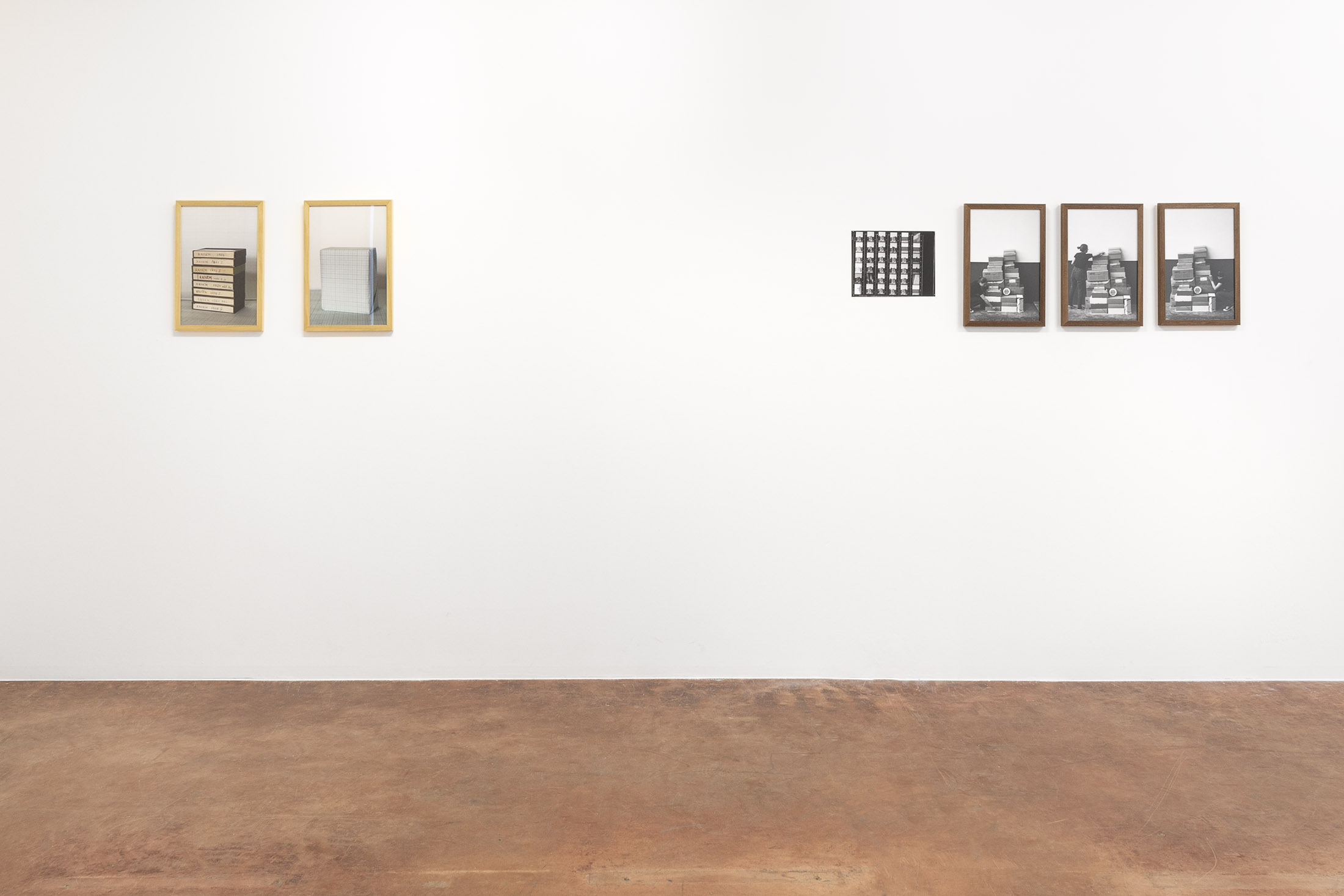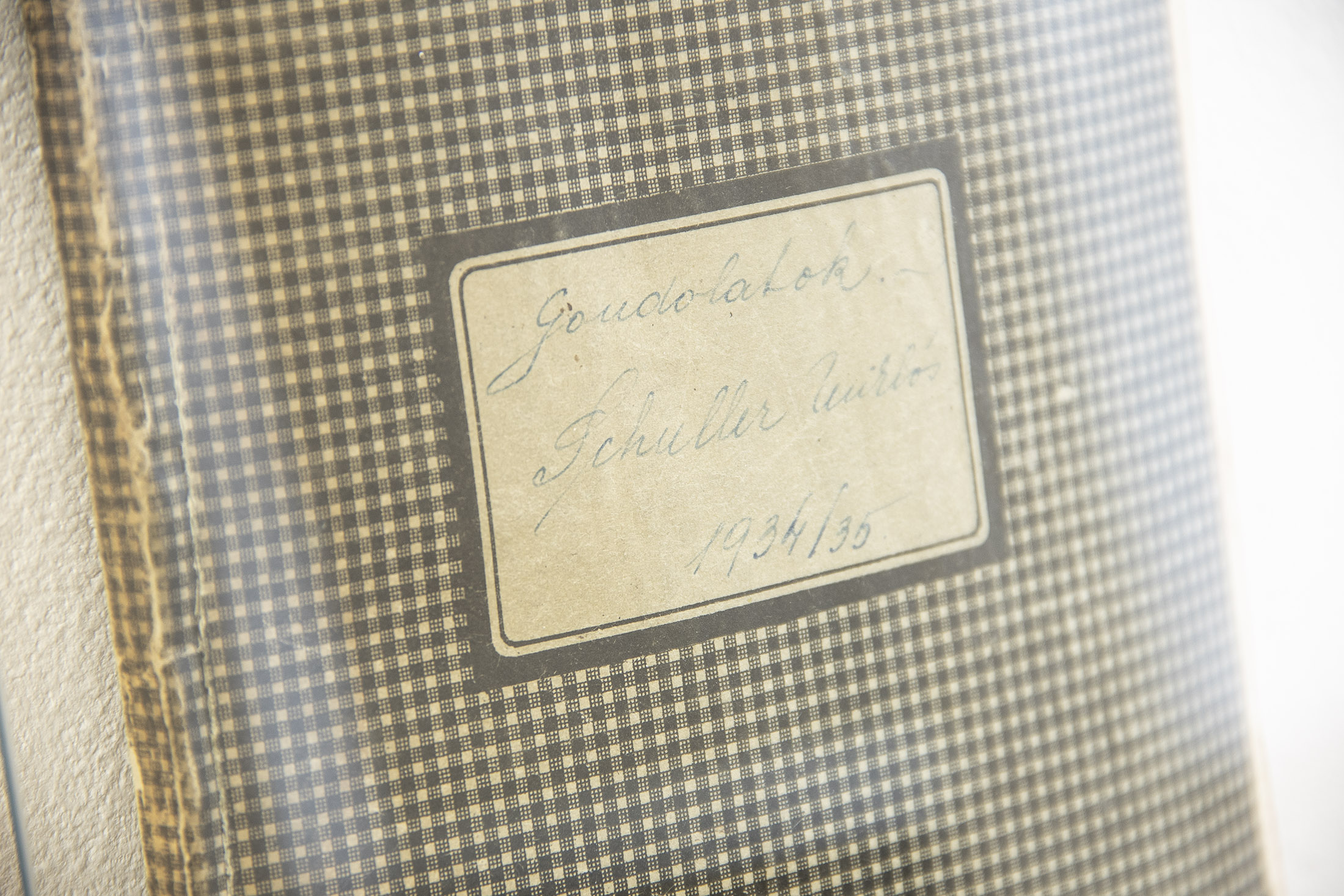Artist: Judit Flóra Schuller
Title: Following the Thoughts of Others
Venue: Julius Koller Society, Bratislava
Curator: Flóra Gadó
Photo: Leontína Berková
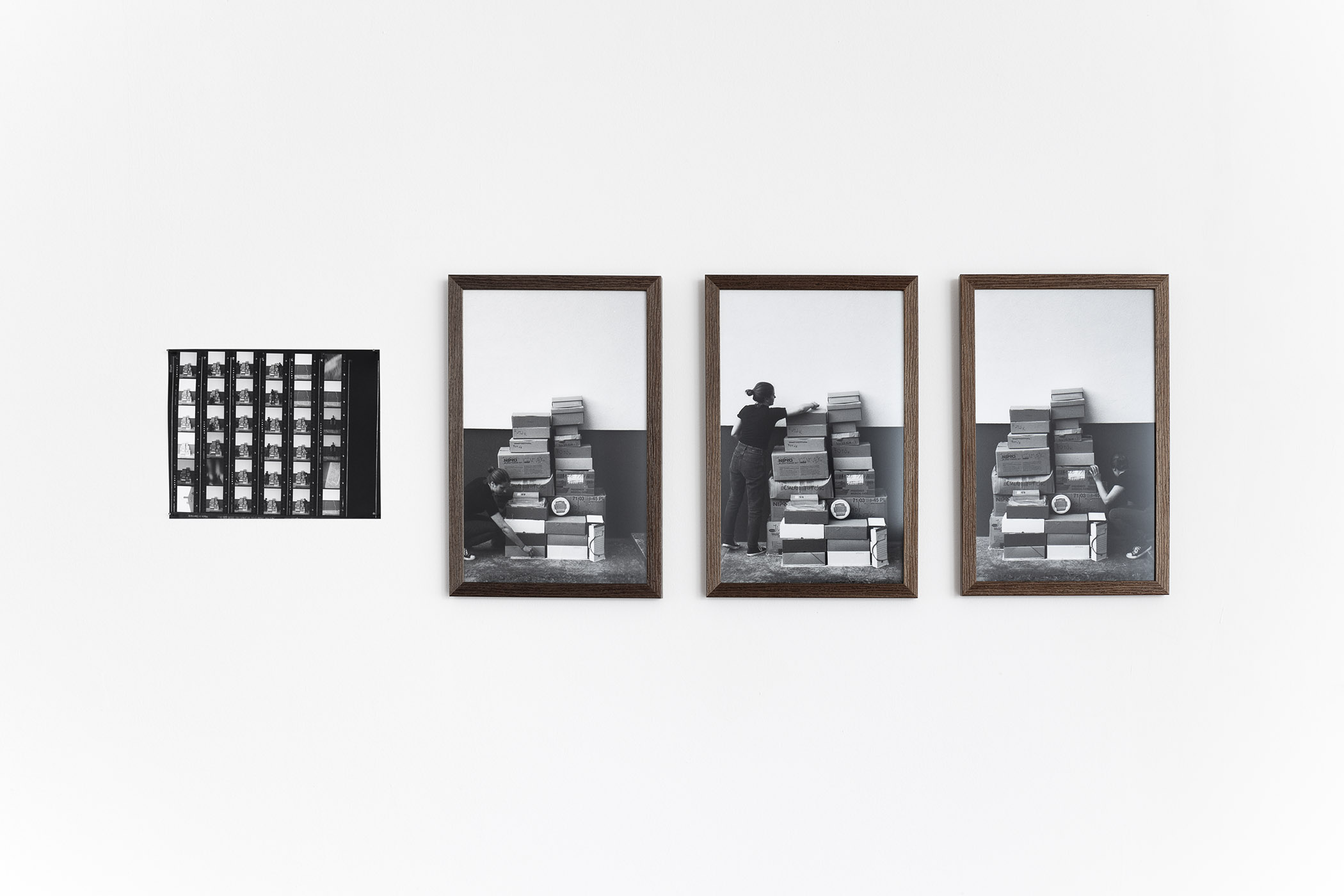
The exhibition Following the Thoughts of Others can be seen as the conclusion of Judit Flóra Schuller’s long-term artistic project and related research, originally entitled Memory Theatre, which is centered around her family archive and heritage, with a special emphasis on her grandfather, Imre Schuller. The title – borrowed from a note that discovered by the artist in the family archive – implies we should finally acknowledge that it is never truly possible to reconstruct our ancestors’ lives. Moving away from seeking some kind of truth or reality, the exhibition suggests that our only option is to, aided by fiction and imagination, “follow” these “thoughts of others” wherever they may take us. This is how Judit Flóra Schuller re-creates and re-invents certain narratives and motives without falling into the trap of attempting fake authenticity or reconstruction. The exhibition highlights certain fragments and episodes from history of the Schuller family, rather than provide the viewer with a complete narrative.
In this sense the exhibition is more like a labyrinth than a linear story, an anachronistic place where different times can meet and morph into each other. This anachronistic aspect means that we never exist only in a single time, on the contrary, different temporalities appear in our lives simultaneously. This sensitivity towards different layers of time is not an invention of contemporary art, it has been a well-known strategy in literature from Marcel Proust to Ali Smith (in whose book How to Be Both, for example, the lives of a renaissance painter and a teenage girl entangle and become interwoven). It is then hardly a surprise that in her works, Judit Flóra Schuller also refers to storytelling methods, like in her text-based work Notes, with its short, often poetic observations and diary-like entries. Thus, turning back to the question of time, the archival material becomes a meeting point between the past, the present, and the future. The attitude is at times close to performative: Judit Flóra Schuller’s approach towards her family’s past and heritage is always an active and critical process.
The artist crafts a dialogue with the past and between generations, while she also emphasizes the process of forgetting, oblivion and “letting things go”. In her previous exhibitions, Schuller’s aim was to highlight the fact that the archive itself was diminishing and moving towards a systematic order, as she was approaching the phase of oblivion. In case of the new works, the artist moves away from regarding the archive as a single entity and instead of critically examining questions related to order and archival systems, she creates her own interpretations based on certain episodes or fragments taken from it. This way she presents her answers to the questions posed by the archive and takes a step back by focusing not only on her own family but also on microhistories and the question of how our identity is shaped in general.
The exhibition functions as a constellation of separate works that can also be interpreted as a whole. It presents older works which could be seen as introductions to the story of the archive (Inventory) as they establish the relationship between the artist and the archival material. In these works, the performative aspect and the bodily involvement become the most important element in the process of dealing with the past and the necessary phase of forgetting. In the series Mothers, we can see again an intergenerational dialogue between the artist, her grandfather, and the grandfather’s mother. In Archive Boxes – Void the artist attempts to understand and map out the density of the archival material, “measuring” it with her own body. As the archive boxes slowly disappear, the artist goes on to create works that are still connected to the archive but represent more abstract reflections on the notions on family, heritage, belonging, and remembering. An important symbol of the exhibition is the motive of the circle: it appears in several of the works, as well as the shape of the installation itself. Instead of emphasizing something whole or eternal, it rather focuses on repetition, the way certain cycles reappear and return in our lives and the lives of others. What matters are the minute differences and cracks introduced with every repetition. This motive appeared first in the work Notes on Remembrance and Oblivion – Rings, in which the artist used permanent materials, such as granite and silver. The granite inevitably reminds us of a tombstone while the silver used was once a ring the artist received from her grandfather.
In a new piece made of limestone (Family Tree – In the Growing of Loving Wounds), the artist used the structure of a circular family tree which she found in the archive. Instead of the standard tree, it depicts her ancestors (with her father and aunt in the middle) in a circular form, reminiscent of tree rings. This also emphasizes that instead of linear thinking about family (and history), we should take into consideration how certain characters and stories can reappear in other figures within a family and how these invisible connections shape us. In Schuller’s reconstruction, only the outlines are engraved in the limestone, referring to the lasting quality of such materials while also pointing out the effort needed to construct a genealogy and see ourselves through the figures of our ancestors and our successors at the same time.
Finally, in the new piece titled Heritage, a well-known symbol of family inheritance, status, and wealth, silver utensils undergo a drastic transformation. As we often associate silverware with family events and celebrations, its cleaning evokes a common household chore. Schuller however uses sulfur to reverse this process and turn the silverware black, turning back time, rendering the utensils unusable. With this gesture, she metaphorically reconstructs the layers of the past. The set of silverware used moreover misses several items, it is incomplete, as can be seen in the two photographs presented in the exhibition: the empty spaces as well as the random organization of the utensils reflect on the topic of absence and oblivion, not only of the objects but also of the people who used them in the past.
In the exhibition, certain works recur, others reappear in new contexts, and new ones emerge to give space to new perspectives and approaches towards one’s family archive and heritage. Similarly, the act of remembering and forgetting, the project Memory Theatre and the exhibition Following the Thoughts of Others cannot exist as accomplished entities, they are always in transition; an open conversation between time parallels, layers of history, and generations.
Flóra Gadó, curator
Judit Flóra Schuller (1991) is a visual artist currently based in Budapest. She obtained her Master of Arts degree from Aalto University’s School of Arts, Design and Architecture in Helsinki (FI) in 2018. Her main interest is centred on the topic of inherited (traumatic) memory and its effects on our personal and collective memory and identity. She often uses her own family heritage as a starting point, aiming for for collective reconciliation with unprocessed narratives of the past through personal, familial elements and microhistories. She is currently a PhD student at the Contemporary Art department of Aalto’s School of Arts, Design and Architecture.
In her other works (Light Observation), she engages the question of visual perception through analogue photographic experiments, by focusing on observation of sunsets, re-created skyscapes, and artificial light sources.
Flóra Gadó (1989) is curator, art critic, and PhD student based in Budapest where in 2015, she graduated from the Eötvös Loránd University with an MA in Art Theory. She currently studies the PhD program in Film, Media, and Cultural Theory and works in the Budapest Gallery municipal contemporary art center as a curator. Over the past few years, Gadó curated several exhibitions in Hungary as well as in the neighboring countries, including as part of the OFF-Biennale Budapest event in 2015 and 2017. Between 2016 and 2019, she was a member of the research group Open Museum, which focused on participatory and collaborative practices in museums. She took part in several curatorial residency and research programs, e.g., at Prague’s MeetFactory in Prague; the Brno House of Arts; the Generator in Rennes, France; or the East Art Mags program for art critics in Romania and Poland. Between 2016 and 2019, she was the vice president of the Studio of Young Artists’ Association. Currently, she is also a lecturer at the Budapest Metropolitan University and co-editor of the magazine Café Babel.
